fall inside a hole
Doll Play series (1993)
First written August 17, 2023Expanded and reworked January 2025
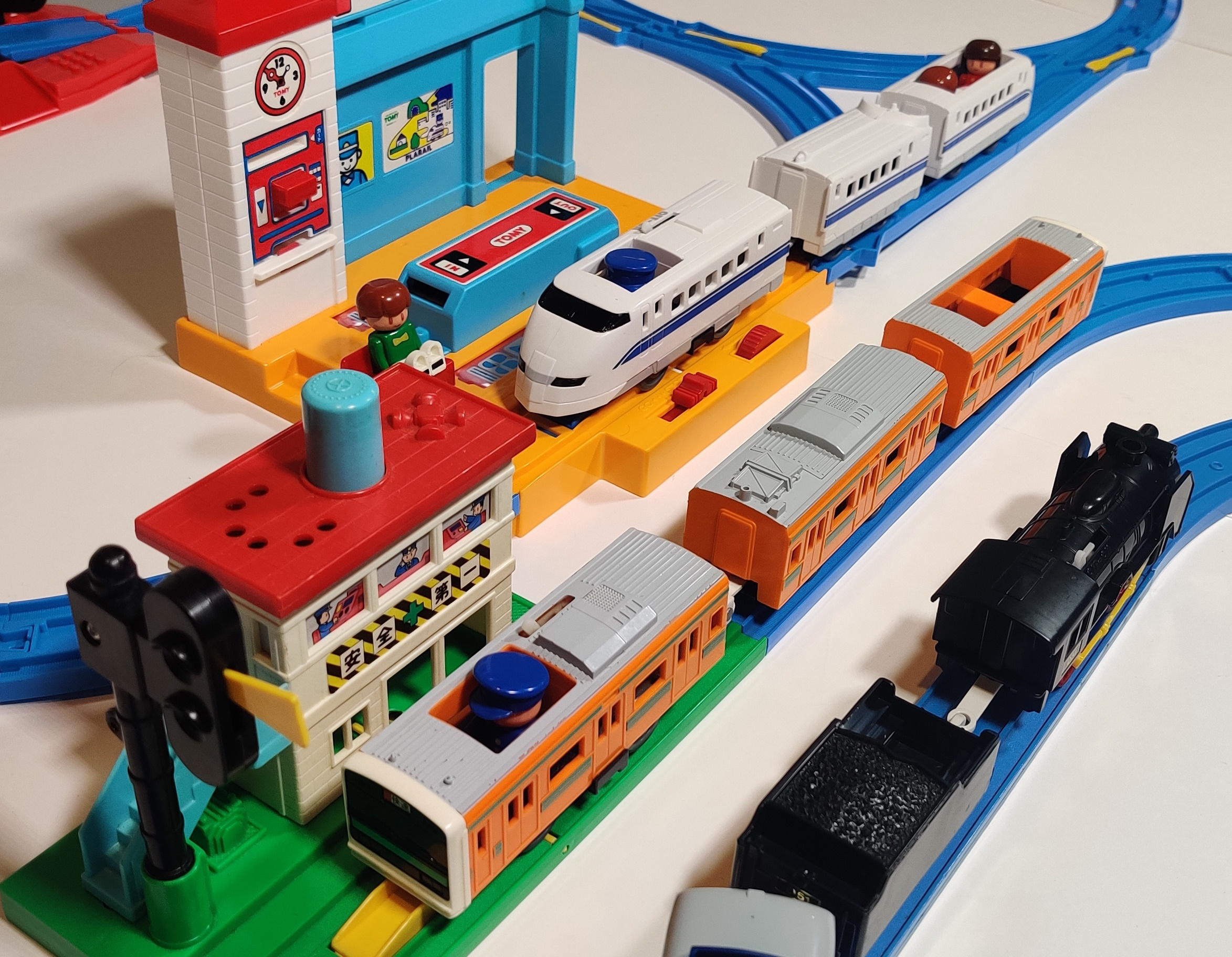
The Doll Play (人形あそび) series of trains and sets were released in 1993 and was Tomy's latest shot at a range of figures to accompany Plarail after the older Family Dolls and preceding the more realistic PlaKids.
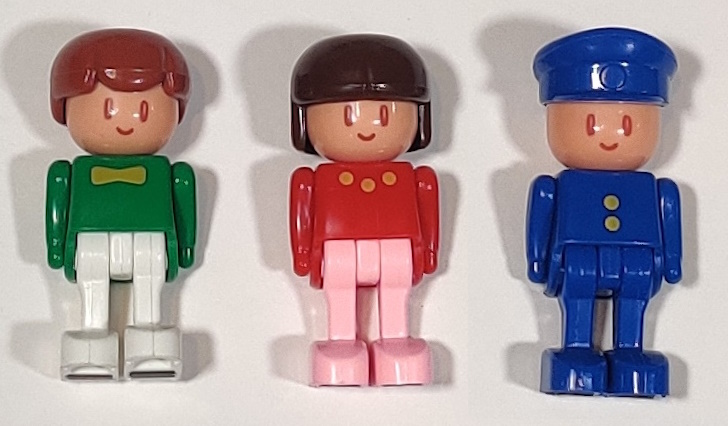
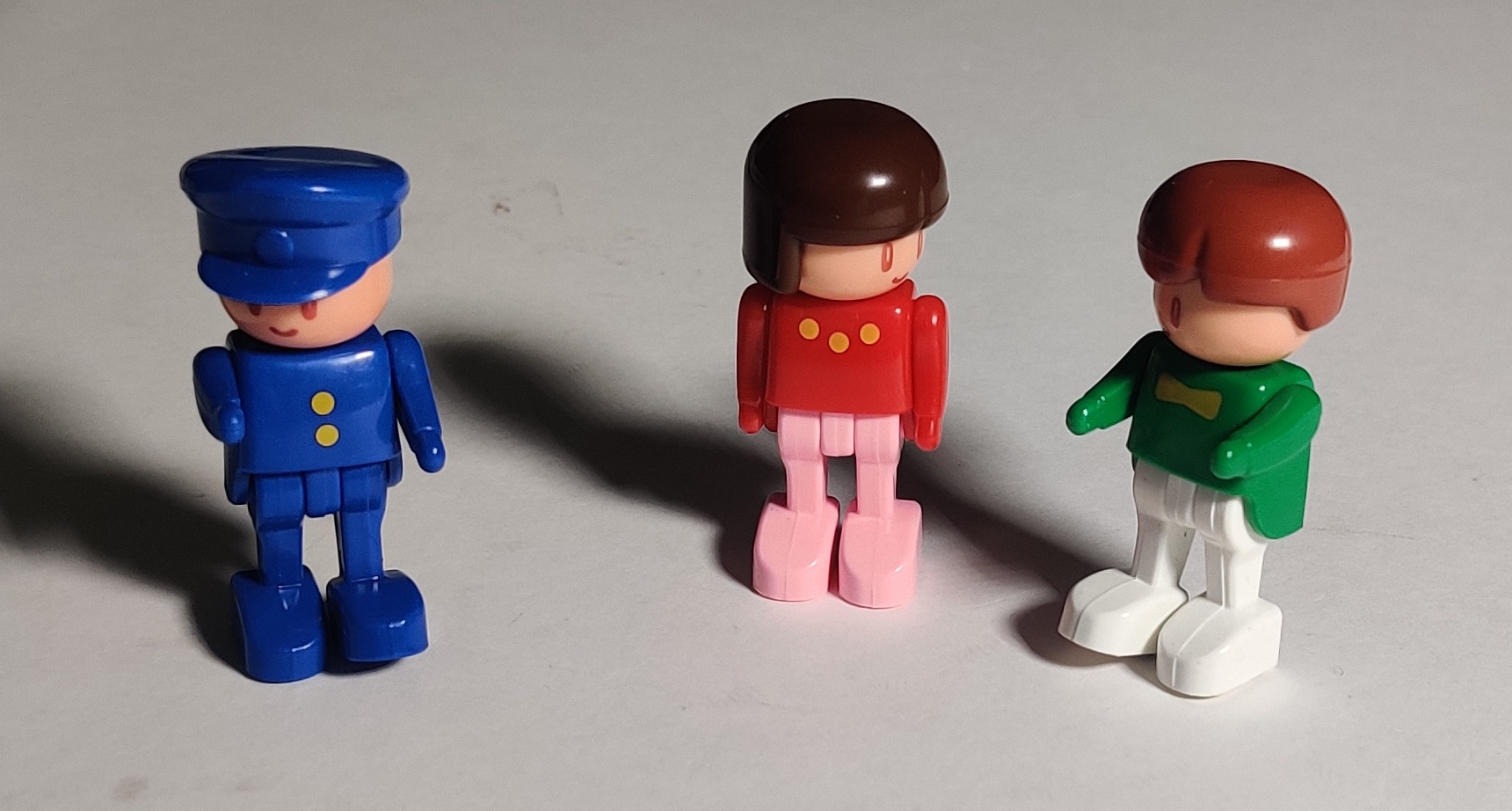
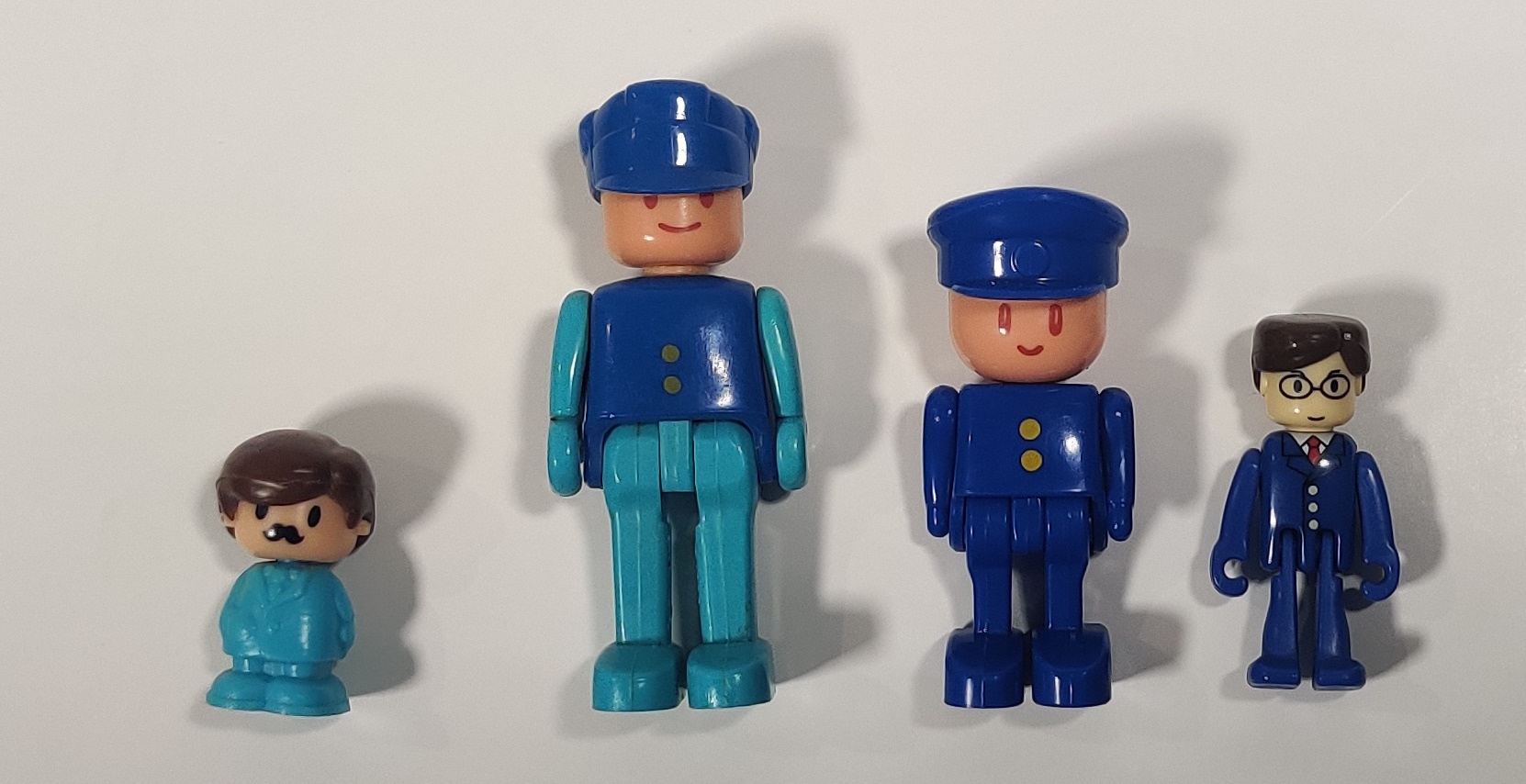
Doll Play dolls are somewhat similar to and are probably based on Tomy Train figures and have articulated heads, arms, and legs. Although the hands are not hooked like Tomy Trains figures, the feet do also include magnets to interact with the single specific Play Doll accessory released in the Ticket Play Station set later in 1993. Three different figures were produced, with the driver and green-shirted passenger being included with the individually released trains and all three figures included in both of the Doll Play sets.
Two Doll Play sets were released in 1993, with the first accompanied by the first individual release train.
| Release time | Name | Description | Photo |
|---|---|---|---|
| July 1993 | Doll Play First Set | Initial Doll Play set introducing the series with 300 series Nozomi and driver and passenger figures to ride it |
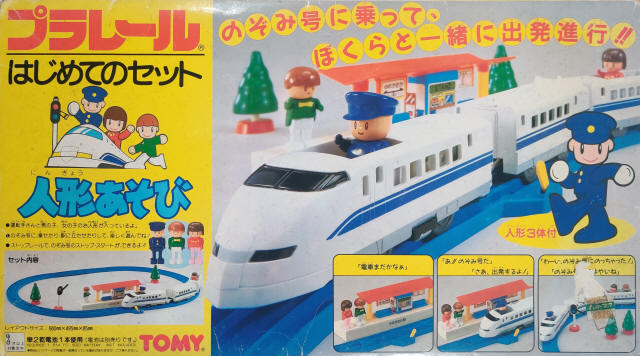 |
| July 23 1993 | Doll Play Commuter Train | 209 series commuter train in orange with cab and tail car seats for the two included "Doll Play" series dolls |
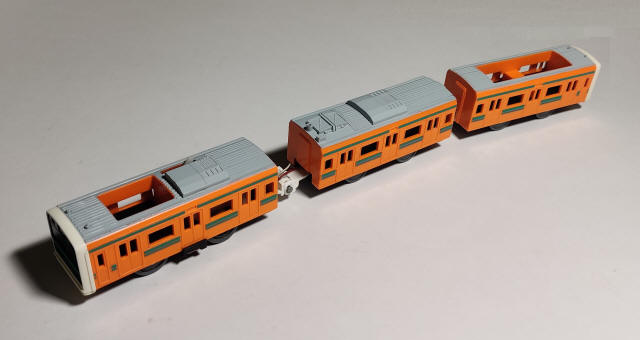 |
| September 1993 | Doll Play Ticket Play Station Set | Includes "Doll Play" 300-series Shinkansen, "Plarail Station" with functioning ticketing system, and reversing figure-eight layout |
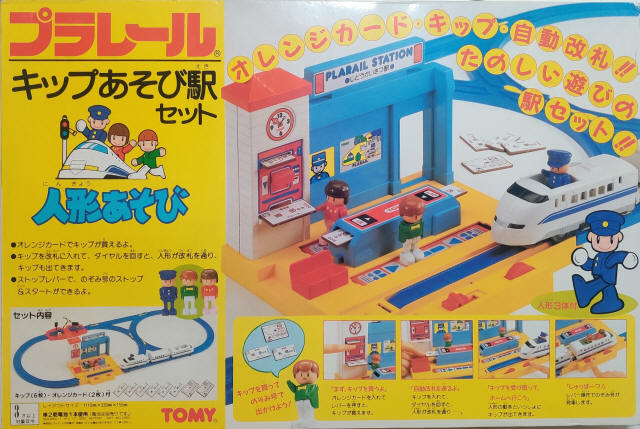 |
| September 1 1993 | Doll Play Nozomi | Individual release of the Doll Play 300 series with driver and one passenger |
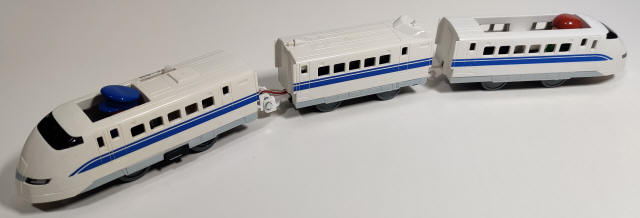 |
| Later 1993 | Doll Play D51 Steam Locomotive | D51 steam locomotive with tender and passenger car with cutout seats for the two included "Doll Play" series dolls |
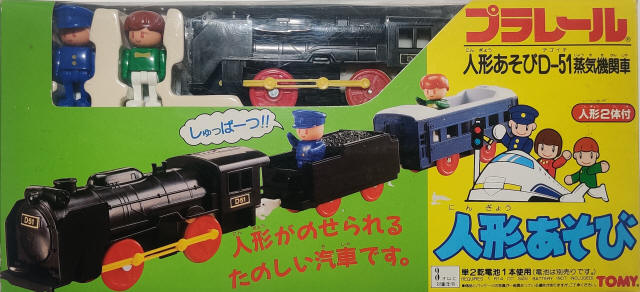 |
| 1994 | J-19 Doll Play Automatic Ticket Gate Station | Individual release of the Doll Play station from the Doll Play Ticket Play Station Set with tickets and passenger figure |
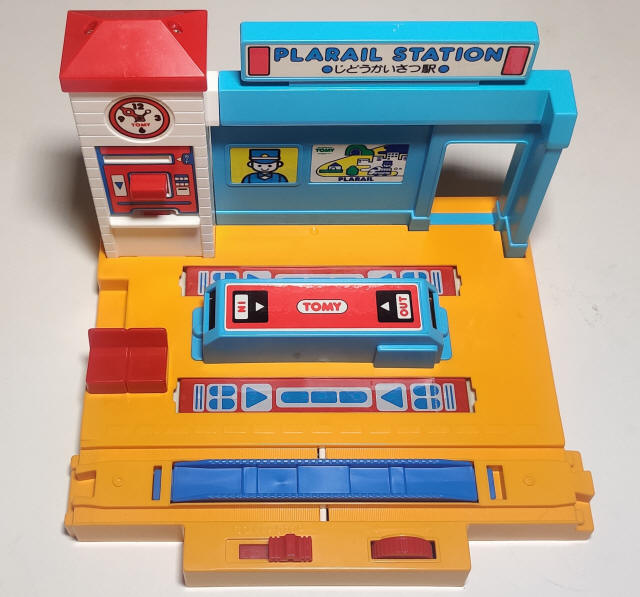 |
Doll Play Nozomi (June 1993 (set)/September 1993 (individual))
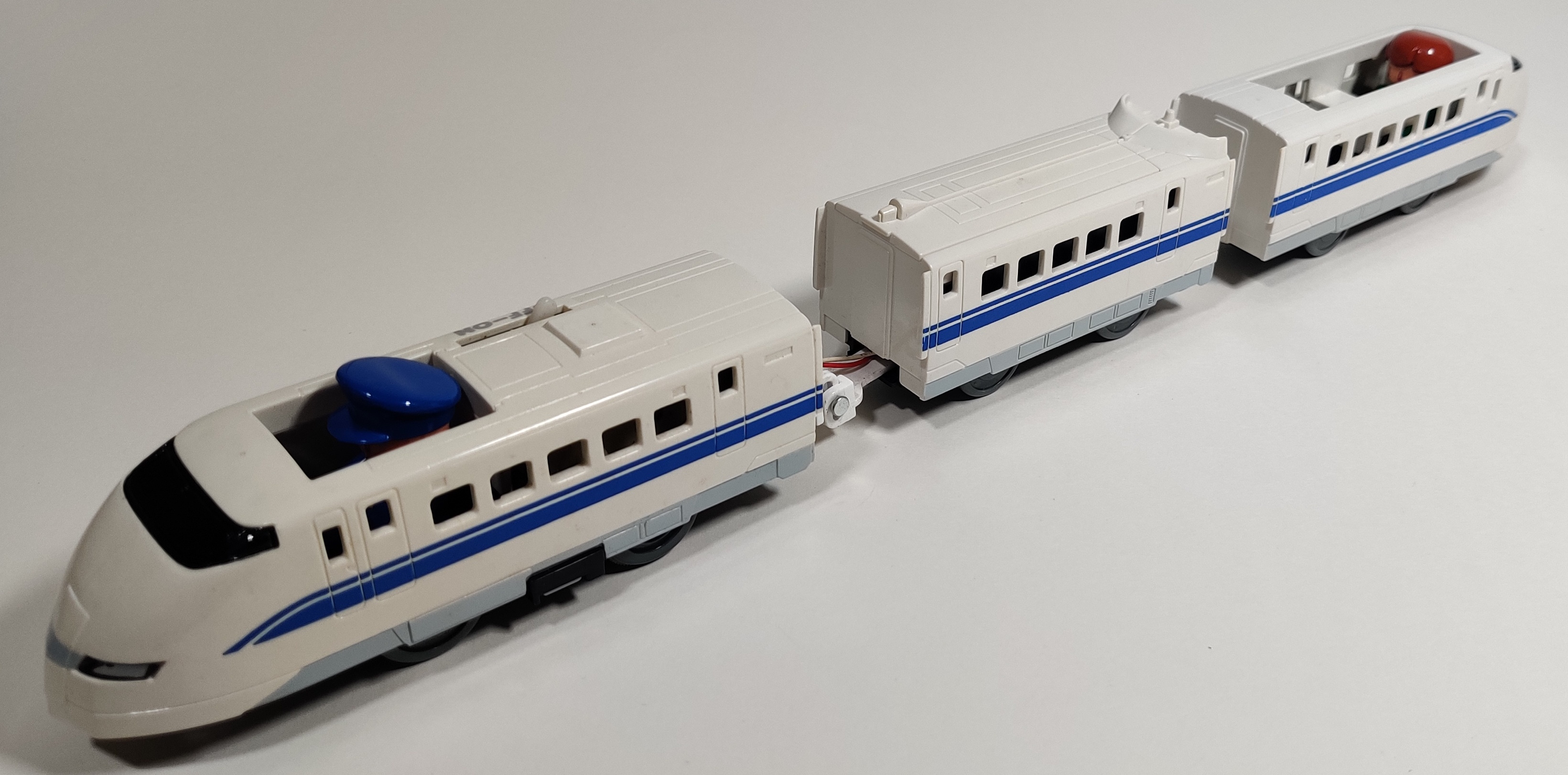
The Doll Play Nozomi (人形あそびのぞみ号) was released in earlier 1993 and was sold individually and in both of the Doll Play-theme sets. The first releases came in the initial Doll Play First Set seemingly released around June 1993 alongside the orange Doll Play Commuter Train, appearing in the larger The individual train release included the driver and male passenger figure like the other individual Doll Play trains. Unlike the "standard" Plarail 300 series made at the time, the 2-Speed Nozomi, the Doll Play Nozomi uses the single speed new power gearbox. The Nozomi is the fastest service on the Tokaido and Sanyo Shinkansen lines and was run by the 300 series trains at the time and was an obvious choice to bring out in a new sub-range.
I have come across three Doll Play Nozomis, one more yellowed than the other two. The yellowed train as well as the train from my copy of the First Set date to June 1993, implying that train may also be from a copy of the small set, and my other train is from a September 1993 issue of the Doll Play Ticket Play Station Set.
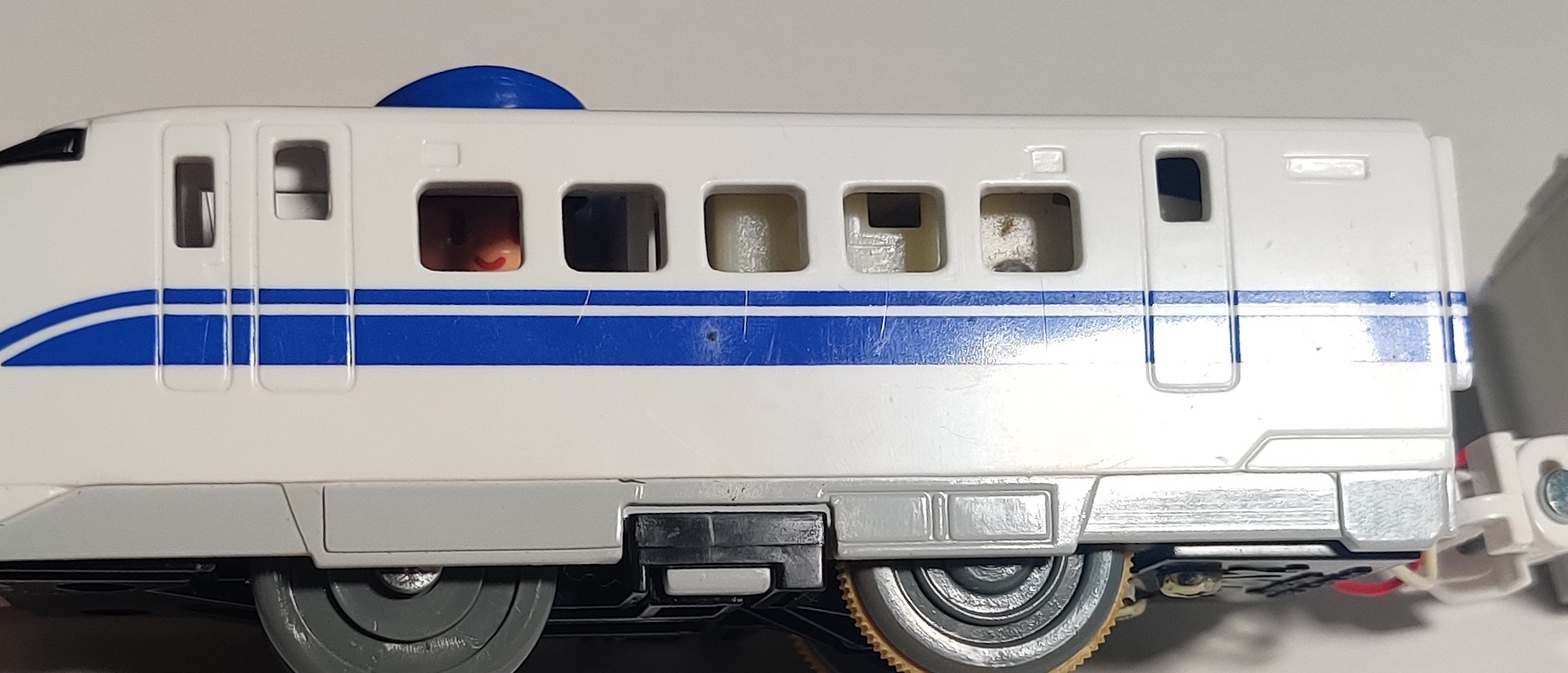
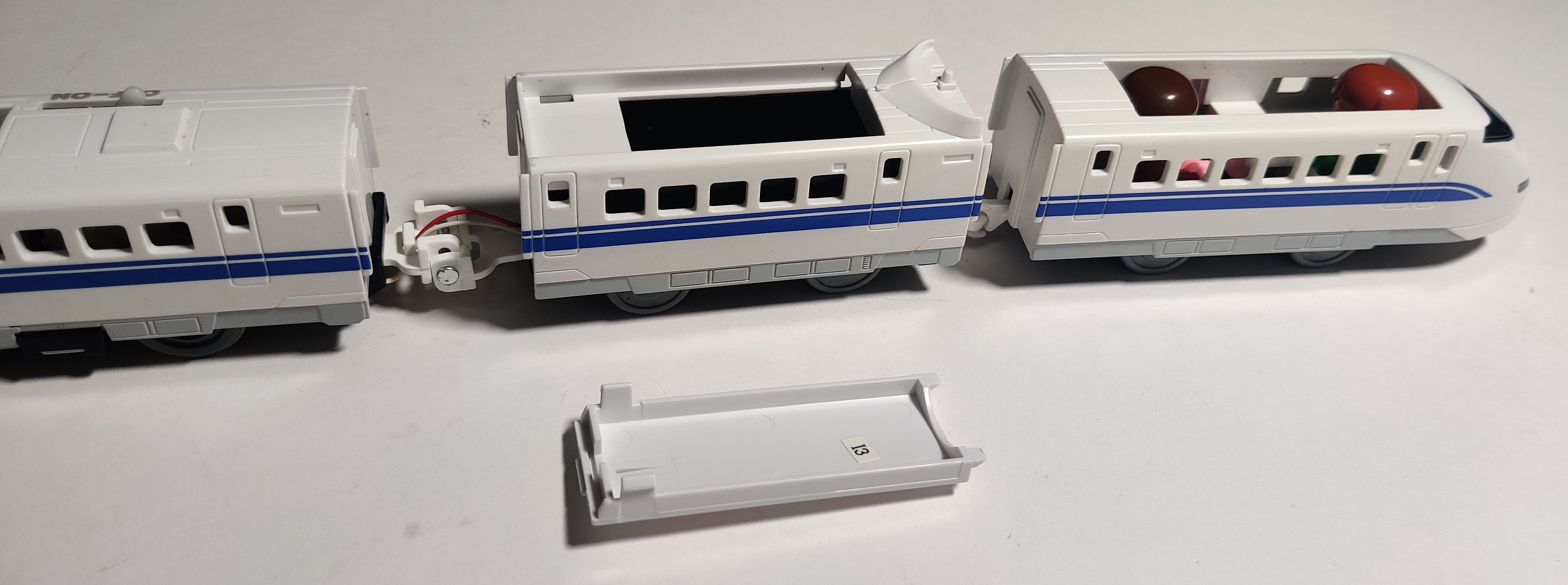
The portion of the power car that would usually house the battery has been remolded into a seat for the driver, who you can just about see through the windows. The intermediate car includes the battery compartment. As the sticker on the battery cover indicates, the Nozomi from my boxed Ticket Play Station set was manufactured in September 1993.
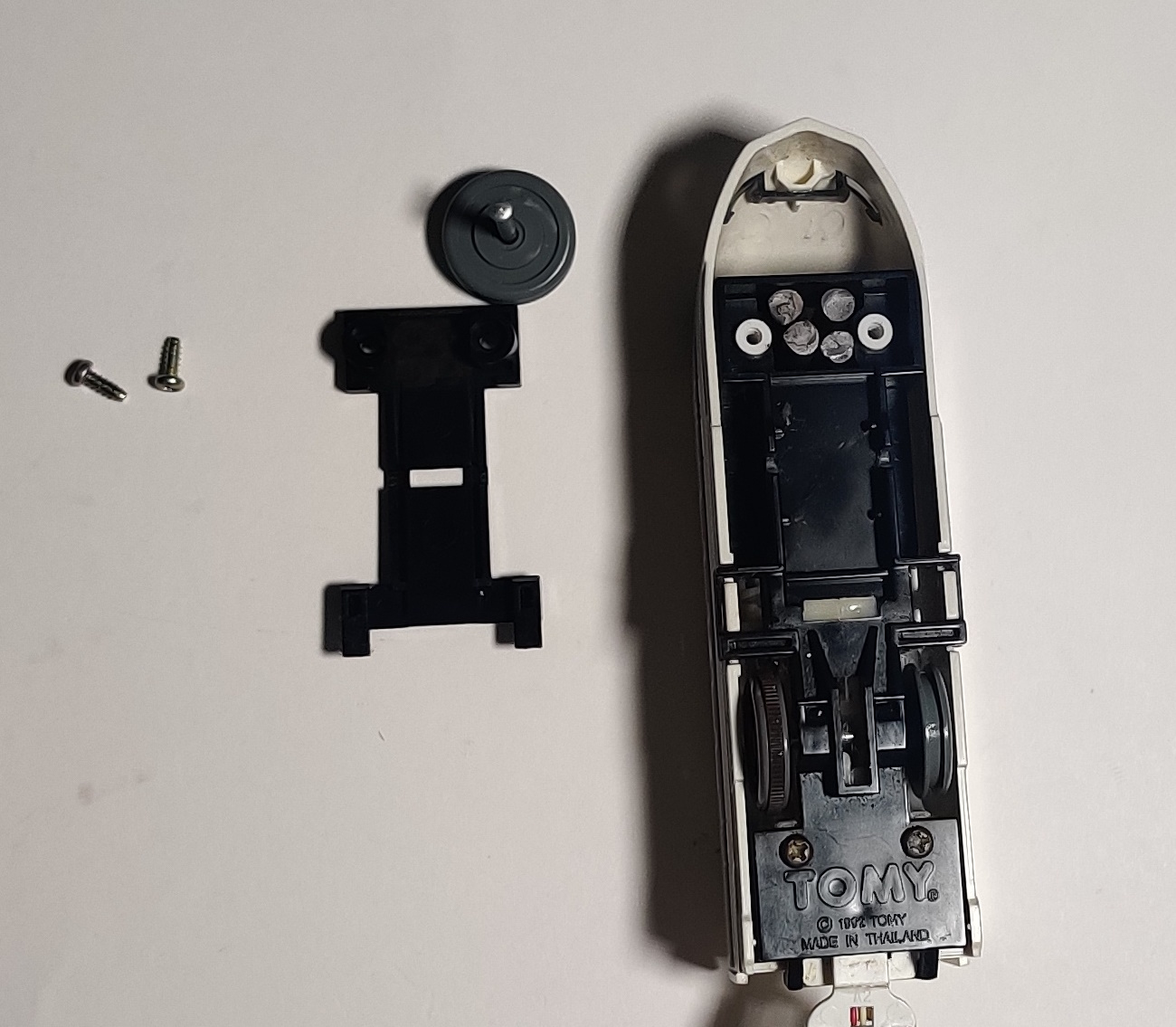
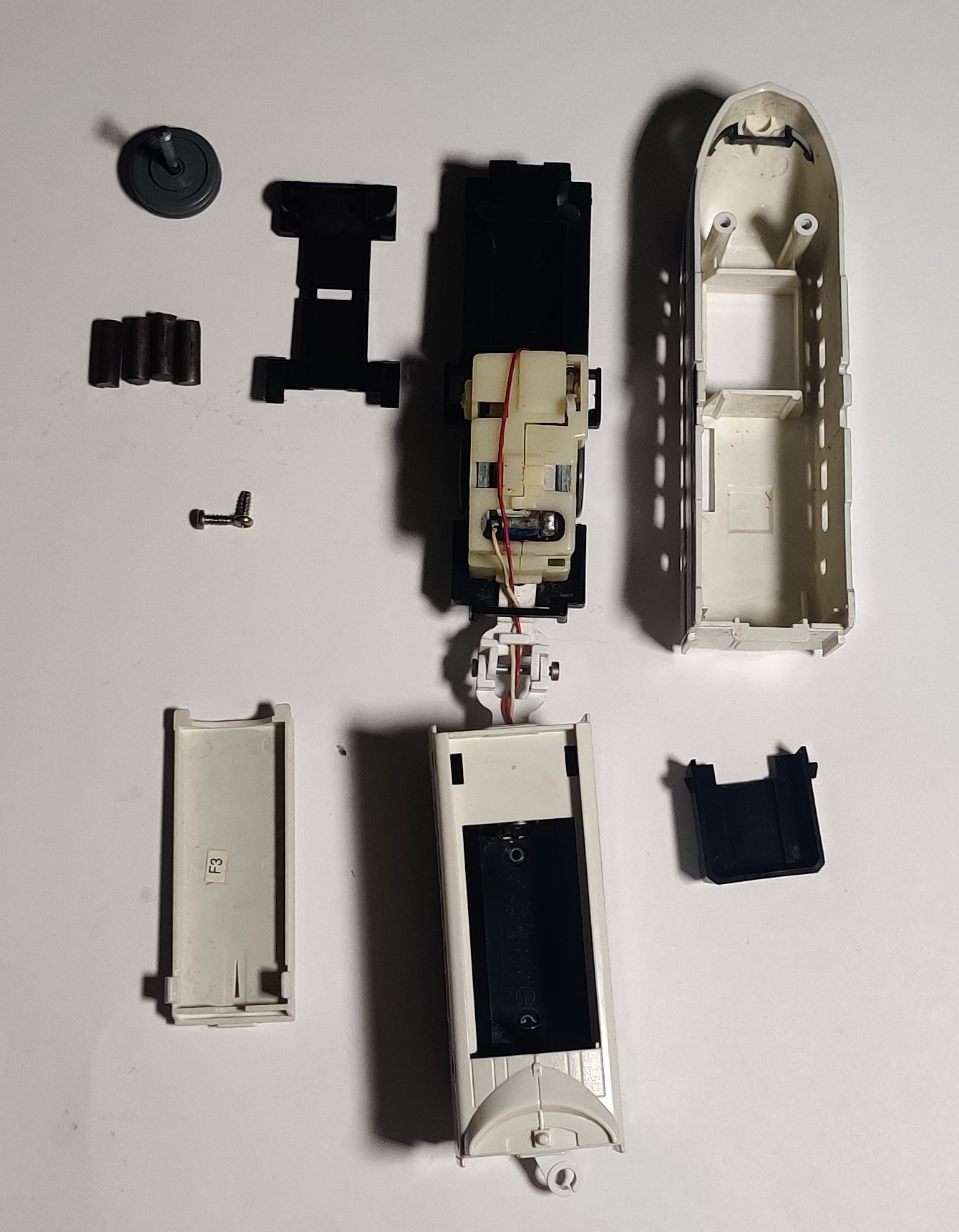
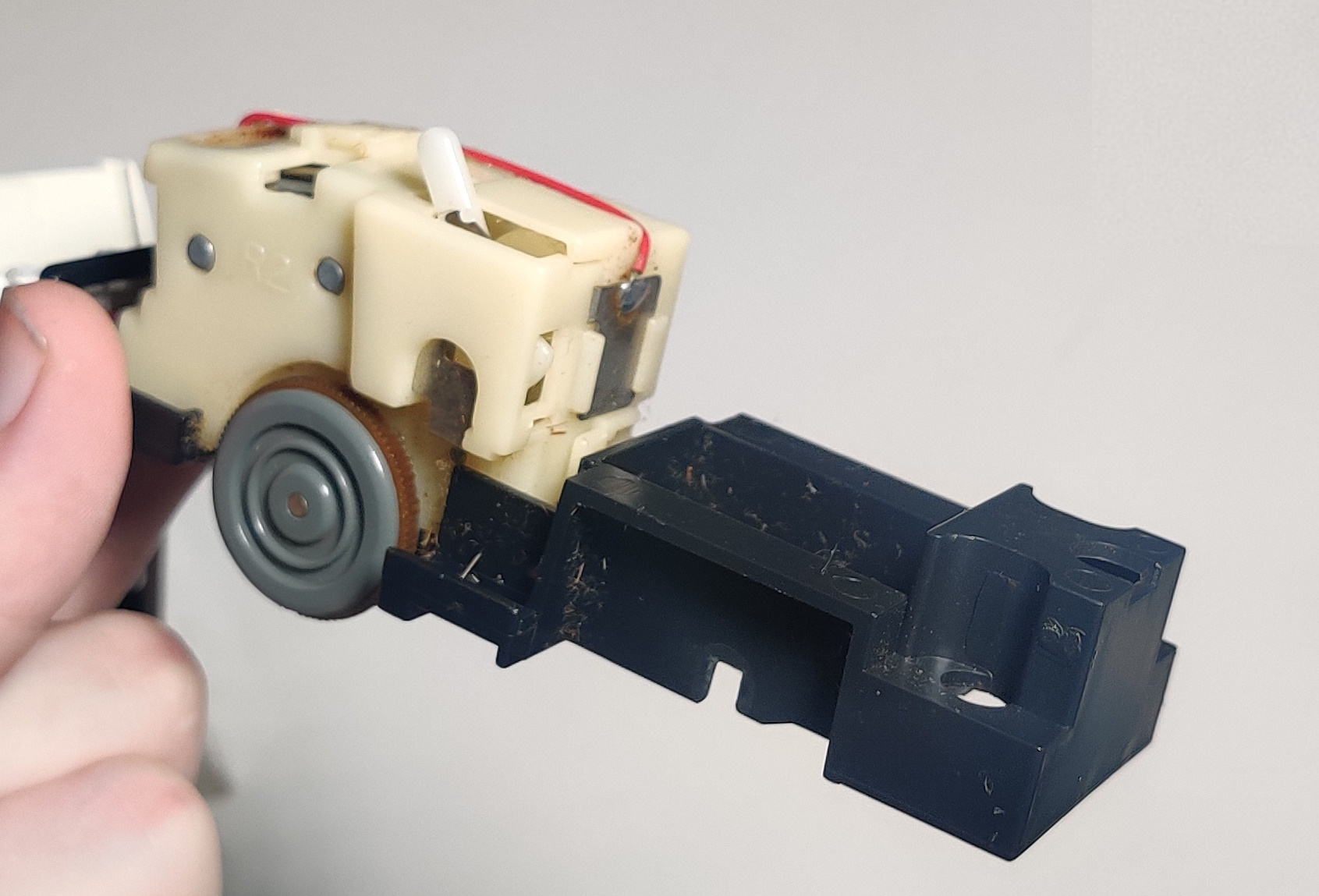
Two screws at the front of the locomotive hold in a clip that locks the upper body shell into the chassis clips so it could not be removed like a traditional Plarail power car top. The clip also holds in the front wheels and several small weights to weigh the power car down to keep it compatible with accessories designed for locomotives that used C cell batteries in the lead car. With the clip removed the body shell comes off like usual to reveal the single speed gearbox. The two screws towards the back of the chassis hold the gearbox to the chassis, and the wires coming from the battery compartment are soldered to the normal gearbox contacts. Seen disassembled is my more yellowed Doll Play Nozomi, which was manufactured in June 1993.
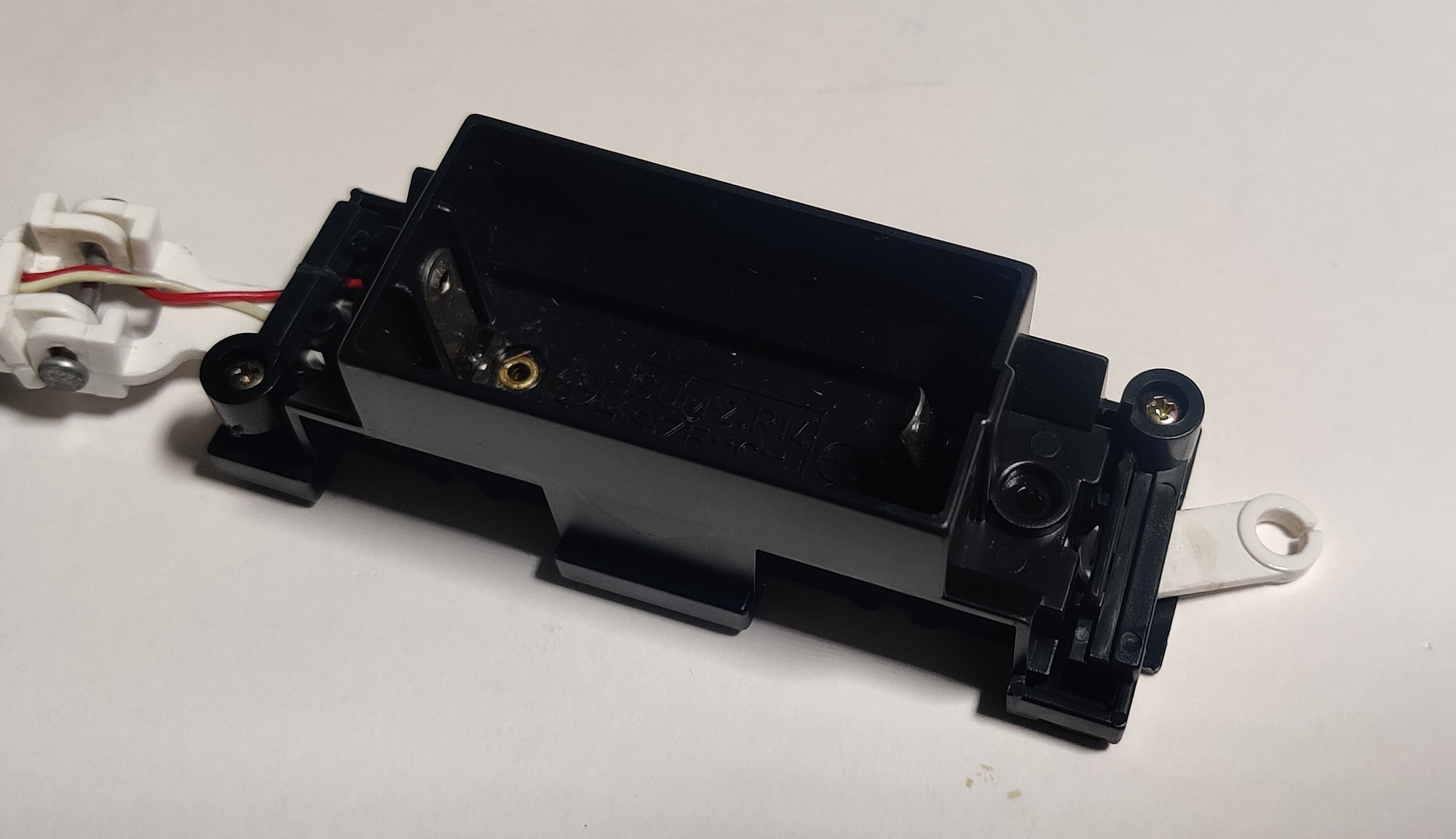
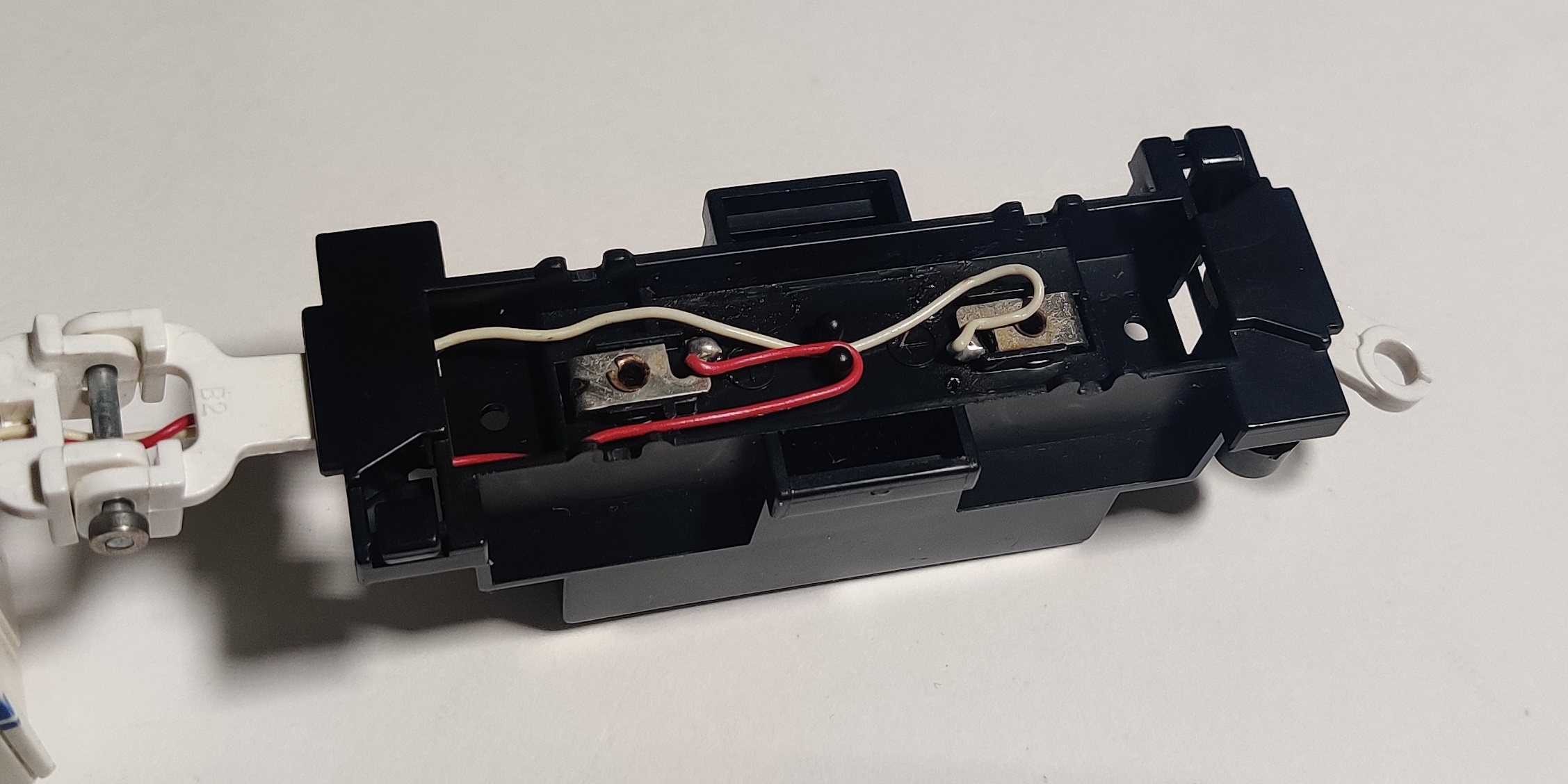
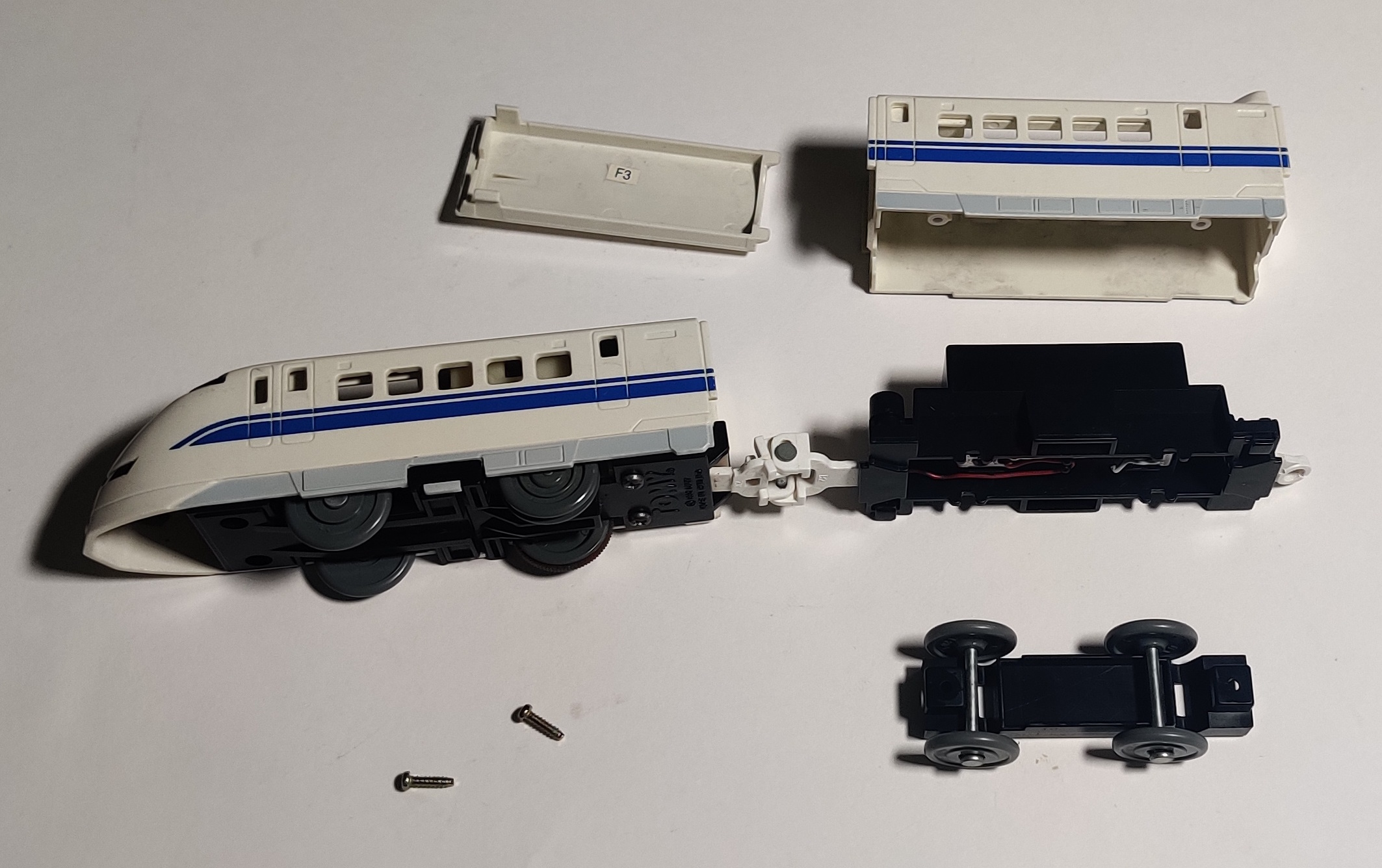
The battery compartment holds a standard C cell battery and has screwed in brackets to hold the couplers in place. Two screws on the bottom hold the wheel bracket to the body shell with the chassis sandwiched in between. The coupling between the power car and battery car was also used on some remote control trains and eventually evolved into the Talk 'n' Action couplings before being replaced by the bulkier multi-car-train couplings of the remote control and sound-steam engines of the mid 2000s.
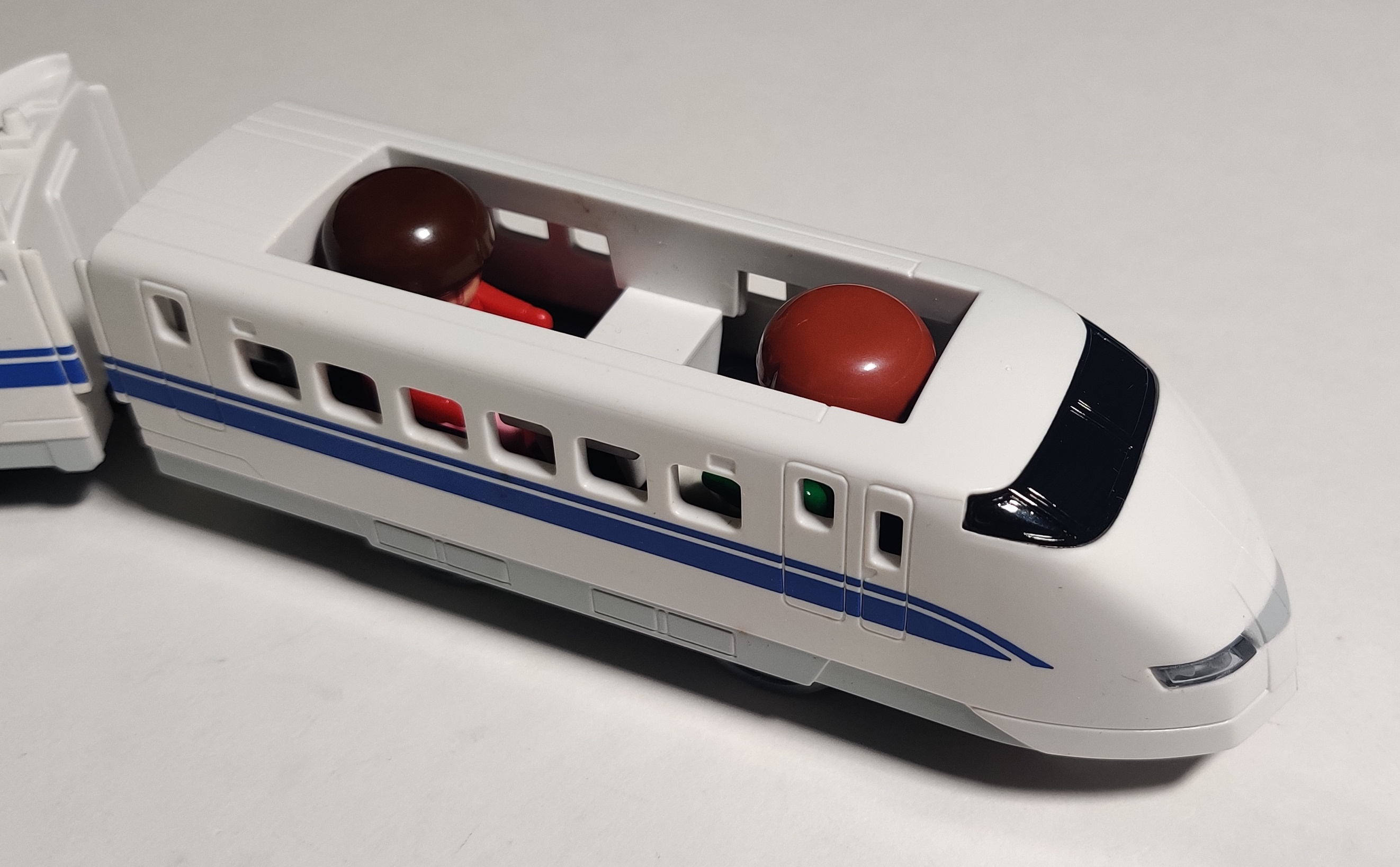
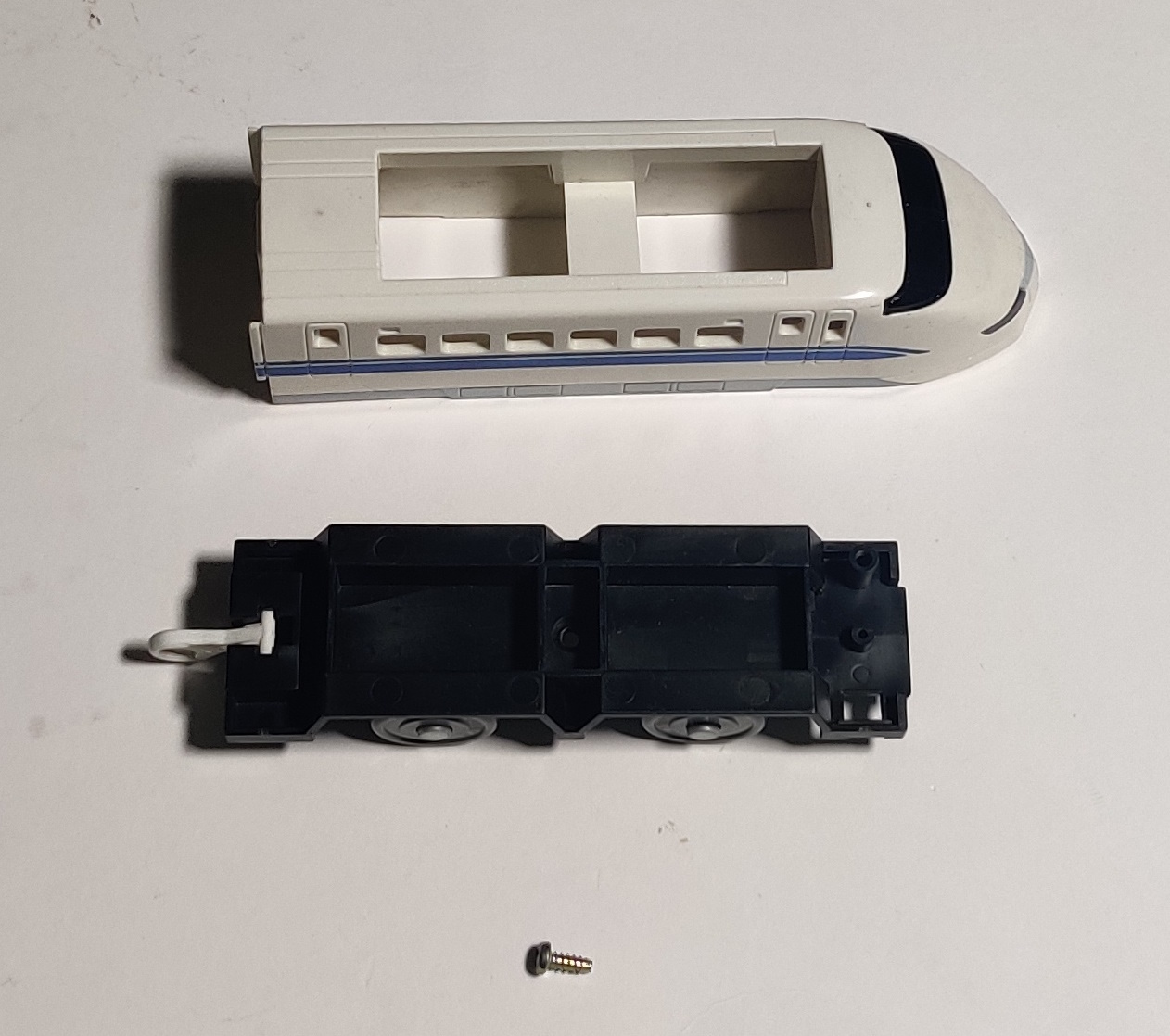
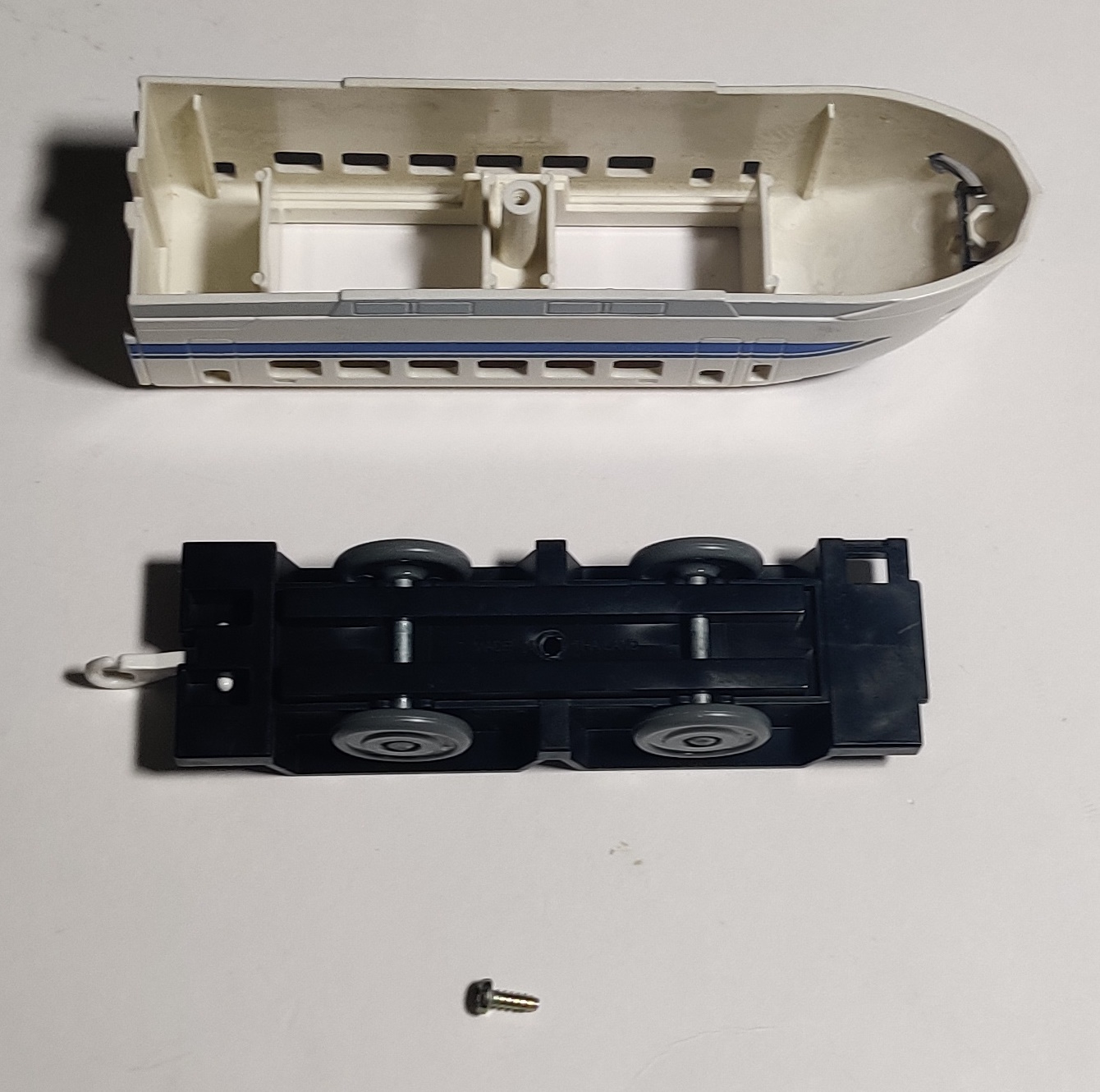
The tail car has been hollowed out to have two seats for the dolls to sit in, facing either direction. The chassis has large molded wheel wells that form the lower section of the "seats" inside and has moldings to accommodate a rear coupling using the same screwed guard that the intermediate car uses. This rear coupling is only present on the D51's coach. The Doll Play Nozomi could theoretically be expanded using the intermediate cars from a regular release Nozomi 300-series, but it wouldn't add any "doll play" features.
The Doll Play Nozomi last appeared in the 1997 Plarail catalogue while all three Doll Play trains last appeared together in the 1996 catalogue.
Doll Play Commuter Train (July 1993)
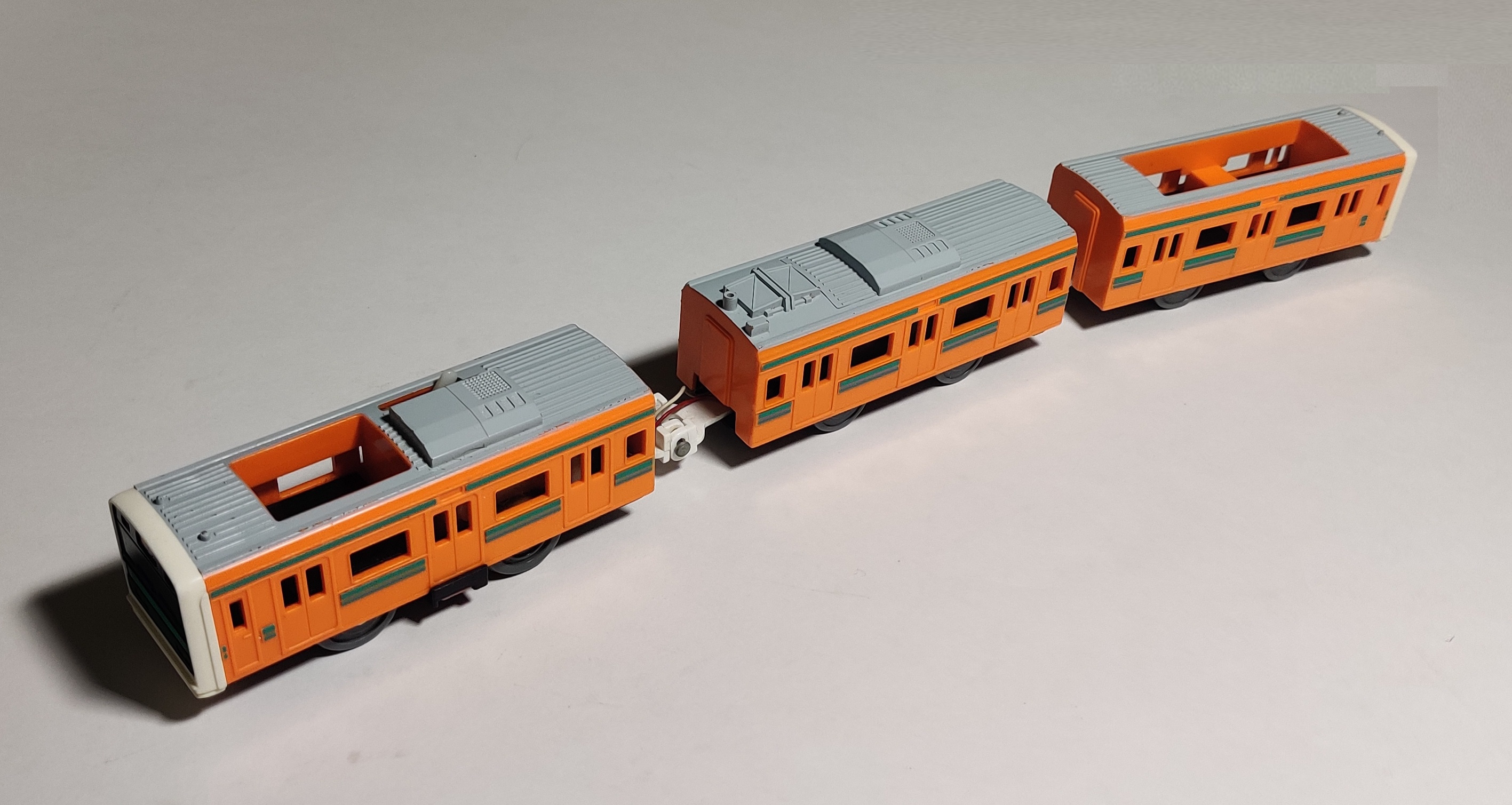
The Doll Play Commuter Train is an orange 209 series commuter train. The 209 series were introduced in 1993 and replaced older aging rolling stock on many commuter lines. From what I can tell, the train bodies were never painted orange, just left stainless steel silver.
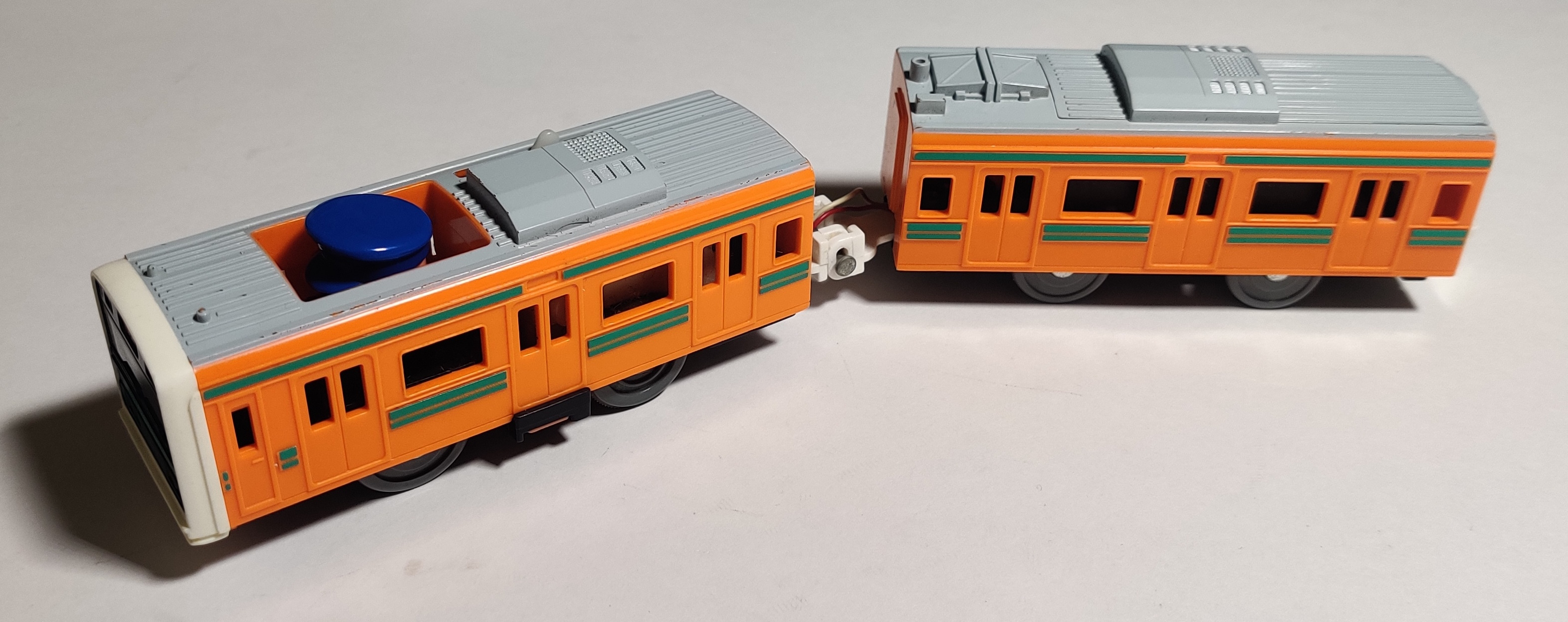
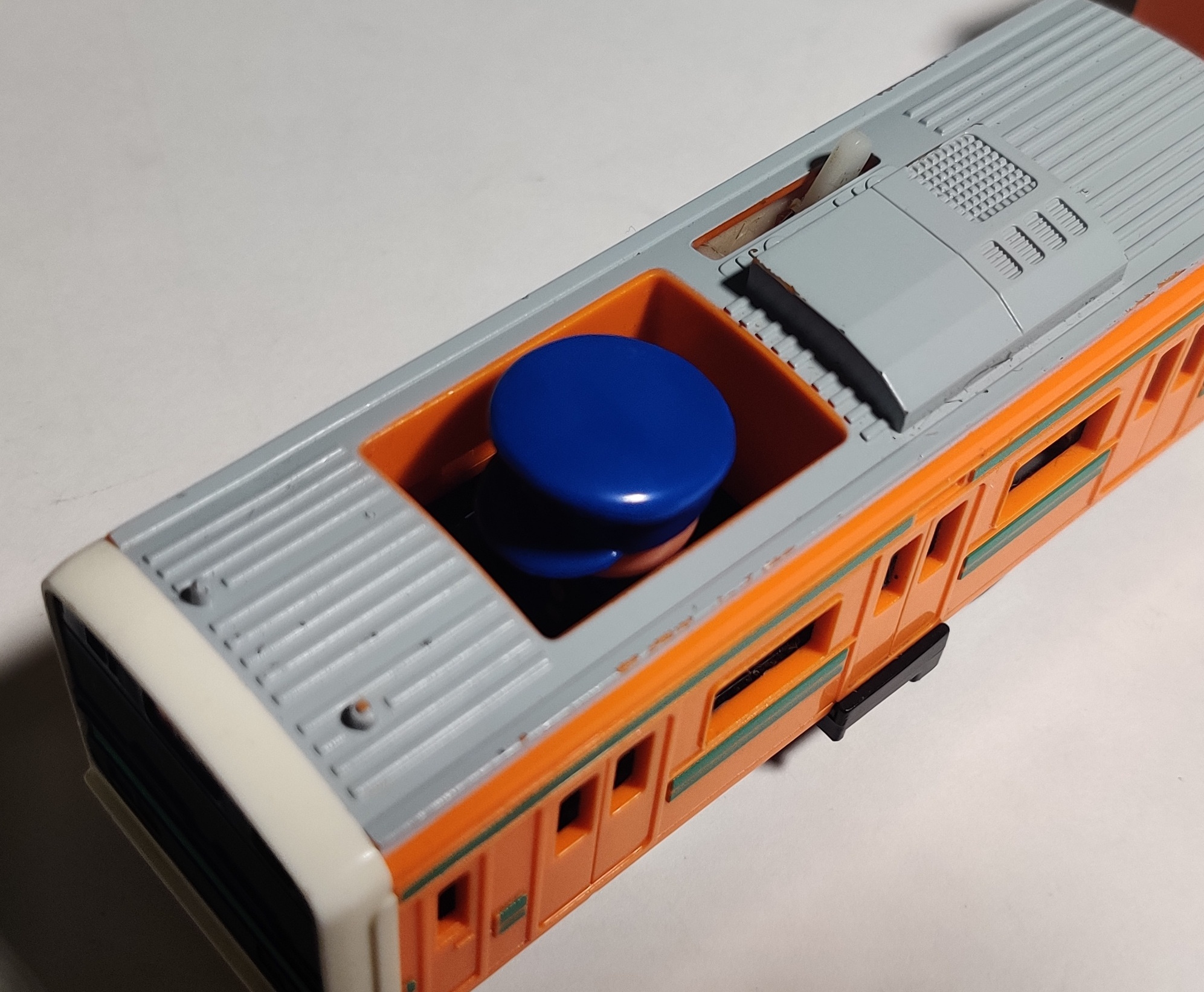
I think the lack of visibility of the dolls inside trains is probably the least well-implemented part of the doll play series, the figures and trains are nice and Tomy Trains showed some other uses for the magnetic feet but once the dolls are sitting inside the trains its hard to really get a good look at them. It is hard to see figures in the Nozomi and on the 209 series the top of the frame of the cars is right in line with the doll's faces. Figures can be stood up in cars, but this looks a little strange and will make the train too tall to clear some common overhanging accessories.
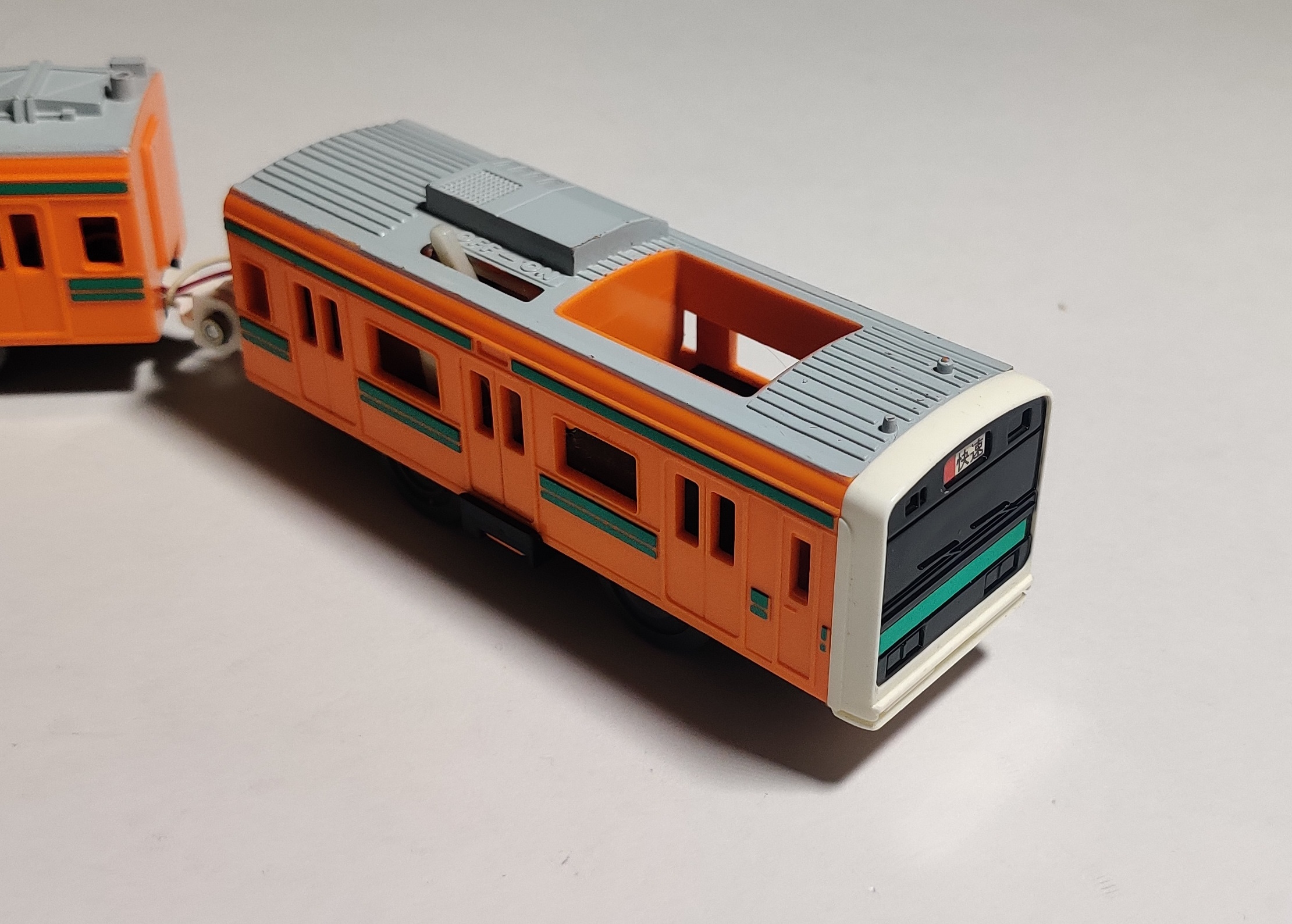
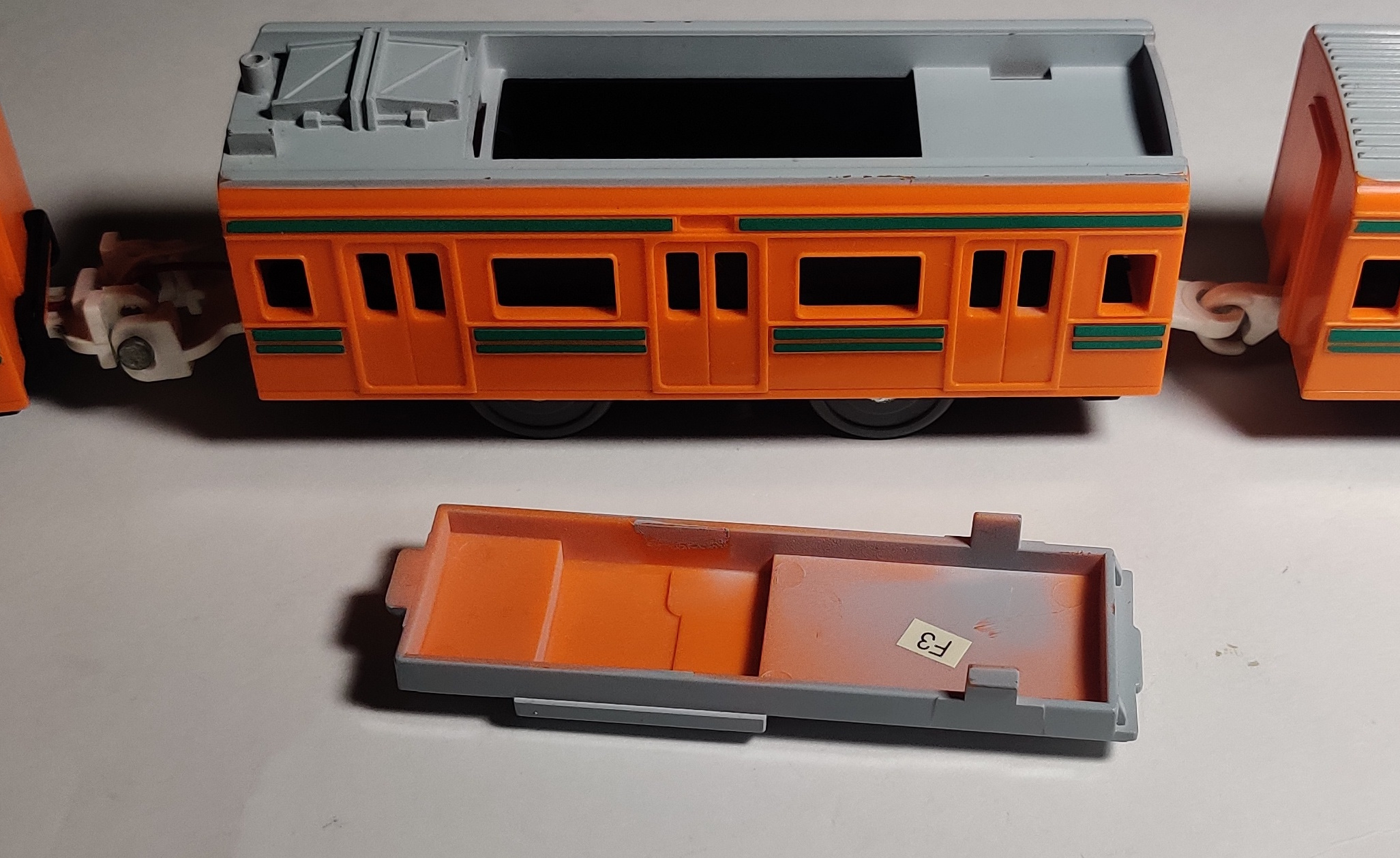
The 209 series comes apart the same way as the Nozomi but has an additional screw under the weights to hold some of the front detailing in place. Like the Nozomi it uses the 80s new power gearbox and has the battery compartment in the middle car. My 209 series was manufactured in June 1993, ahead of the July 1993 release period.
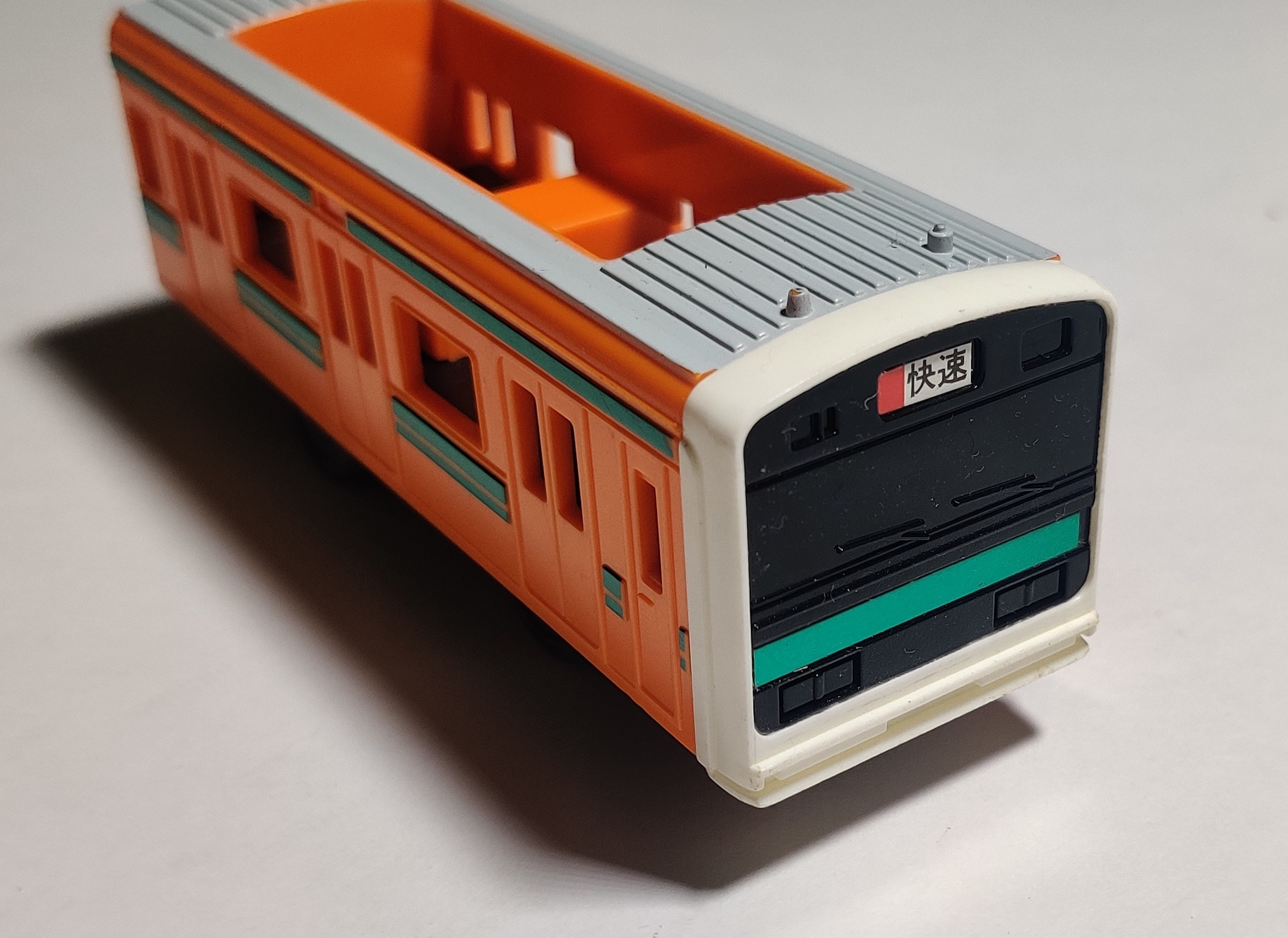
The tail car uses the same chassis as the other Doll Play tail cars.
Doll Play D51 Locomotive (later 1993)
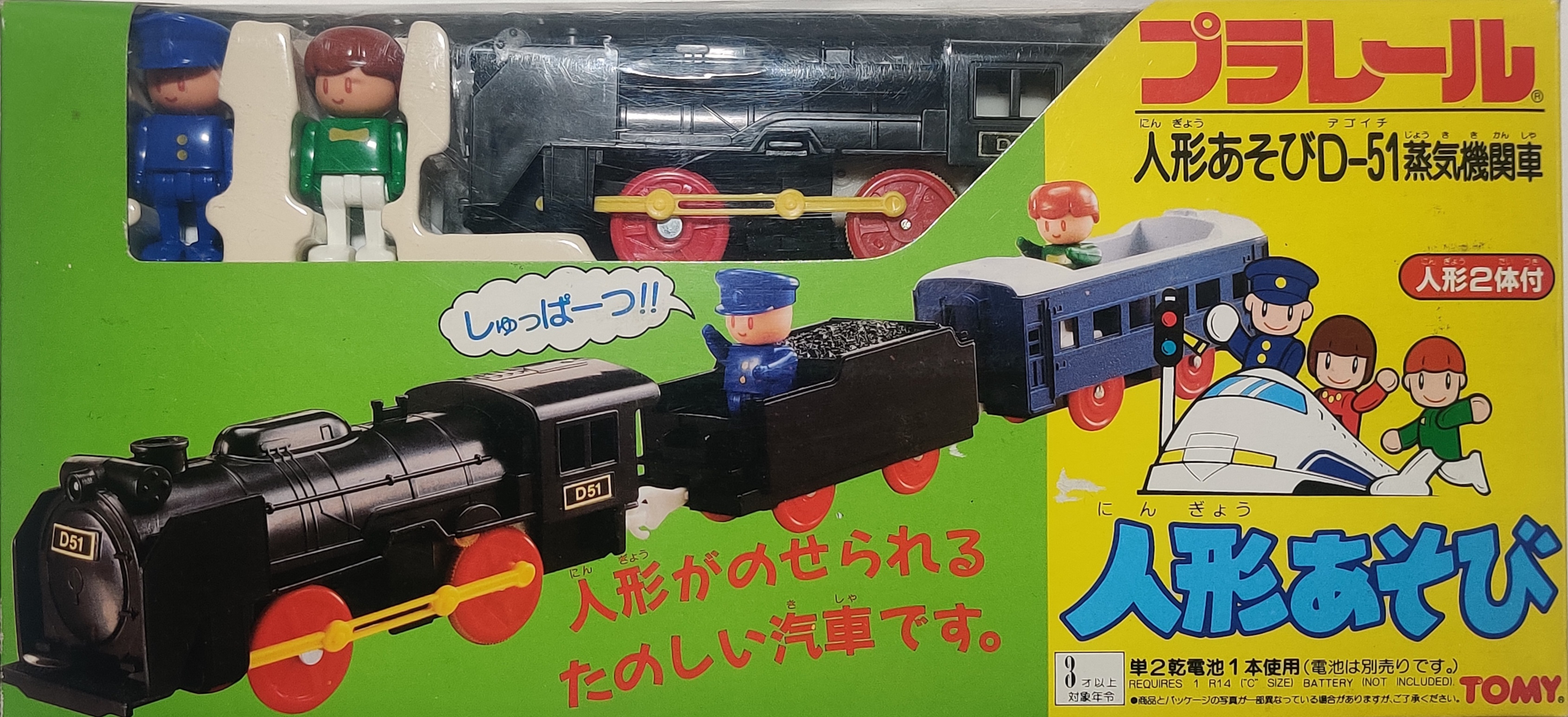
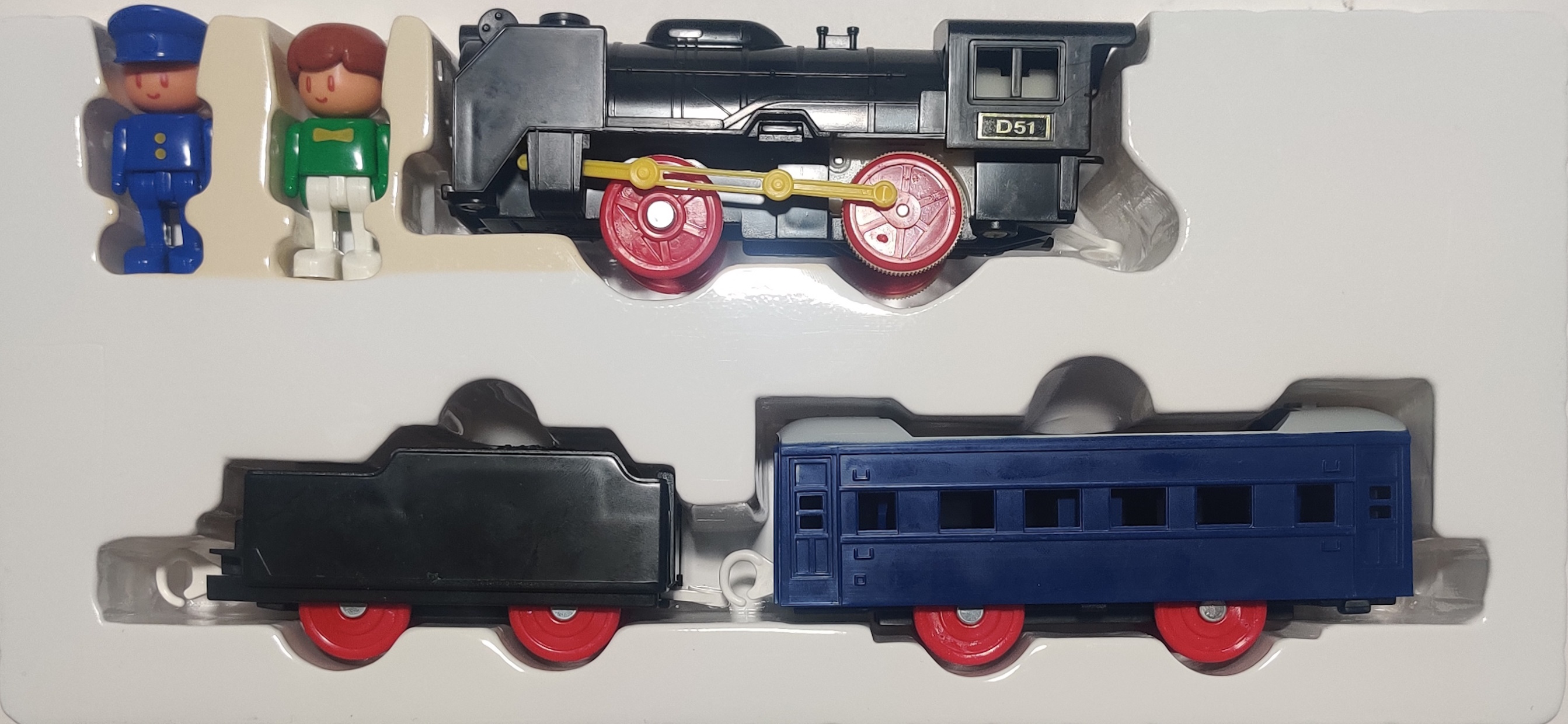
The Doll Play D51 released later in 1993 and includes a conventional D51 of the era with the driver getting to ride in the specially molded tender. A blue coach with open roof seats two passengers.

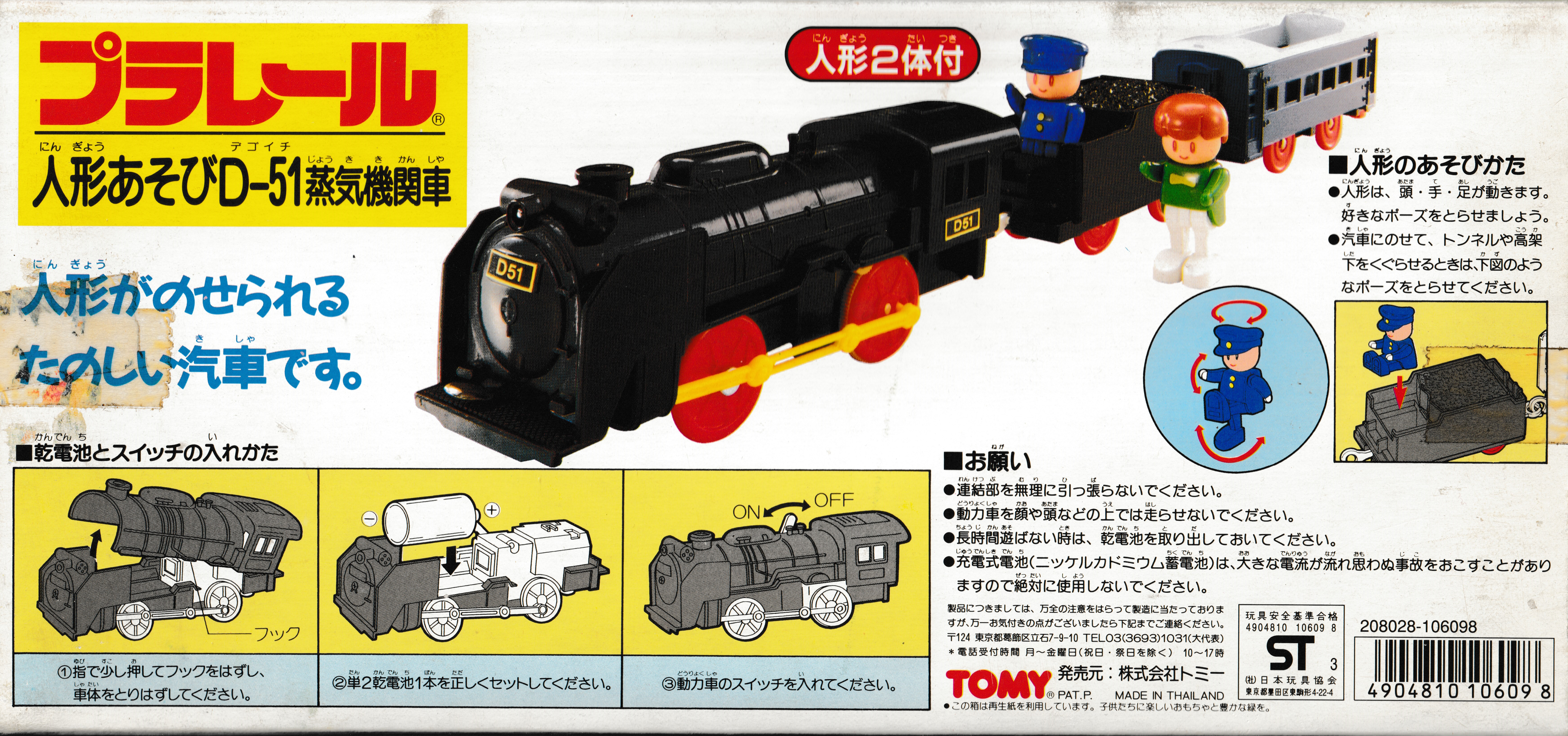


There are three different releases of the Doll Play D51. The earliest type from 1993 include Thailand rim-drive D51s (most likely based on the D51 with Light molding in Thailand at the time but without the light fitted) and come in boxes showing the old power D51. The earlier 1994 (and probably very late 1993) releases use the new axle-drive power and D51 with Light molding (again without the light) but come in 1993 print boxes that primarily show the rim-drive D51 except for the updated battery information on the back of the box. This is the variant I own - the ST-3 on the back show that the box was printed in 1993. Later in 1994 a new run of boxes showed the new power D51 included within.
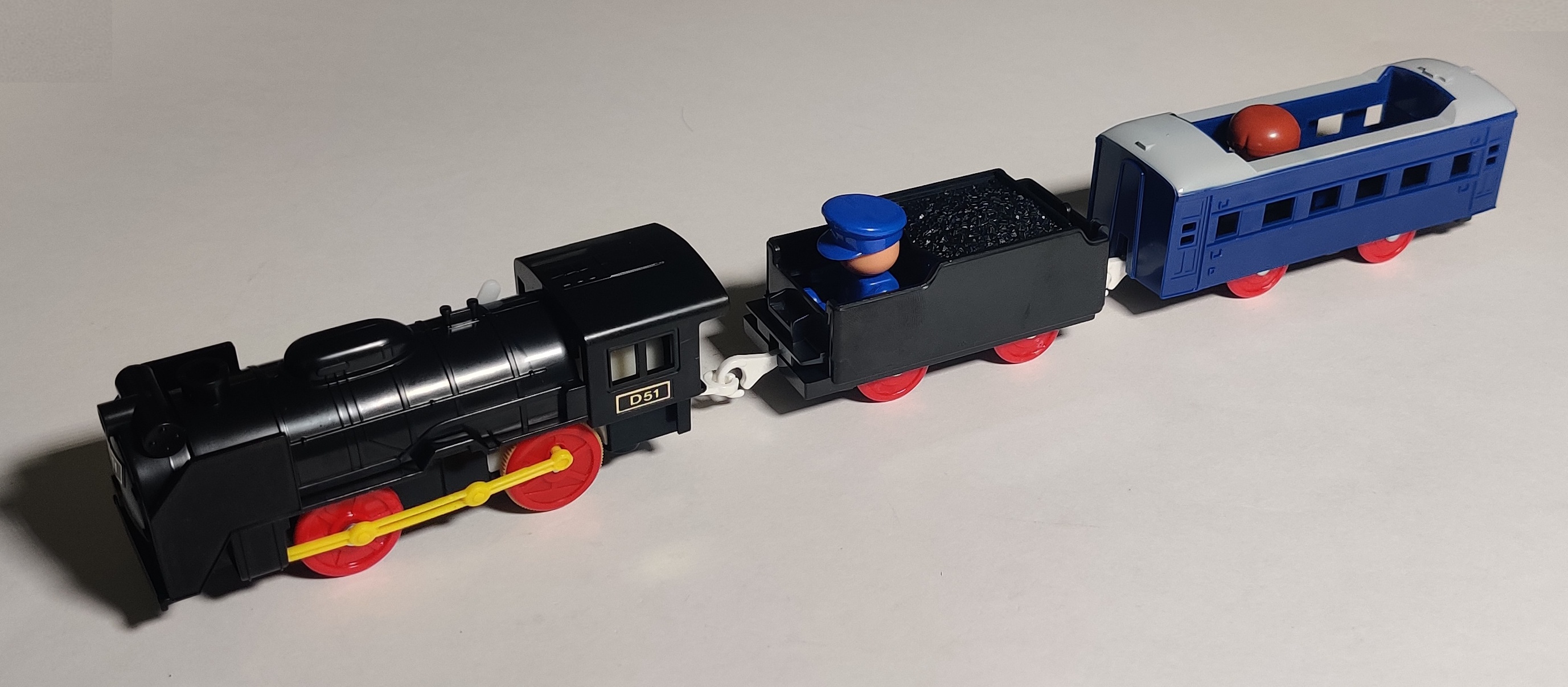
I think overall the Doll Play D51 is probably the nicest looking of the Doll Play trains. The 300 series and 209 series were both definitely made correctly - there was no way they could get away with not putting the driver's compartment where they did - but being able to move the driver's seat on the D51 to the tender and use the regular D51 shell makes the D51 look a lot more natural and shows off the driver a lot better. The roof of the coach slopes inwards to allow a slightly better look at the dolls inside as well, and I think the passengers sitting in a coach behind the driver in the tender behind the engine looks better than the drivers in the power car, a normal-looking intermediate car, and then the passengers in the tail car. Multiple Doll Play carriages could be connected to a D51 while the Doll Play compartments were only in the final tail car of the other two designs.
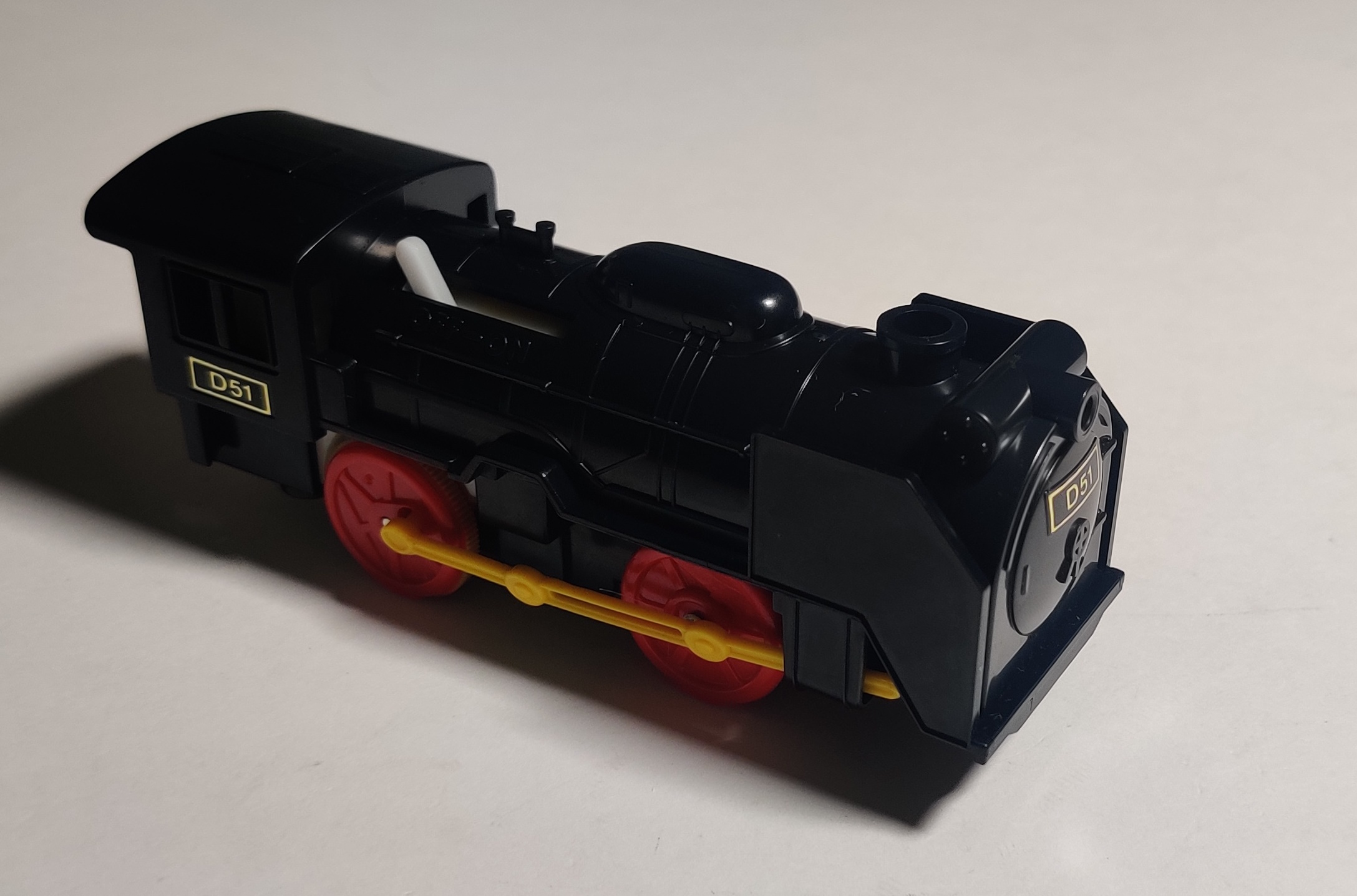
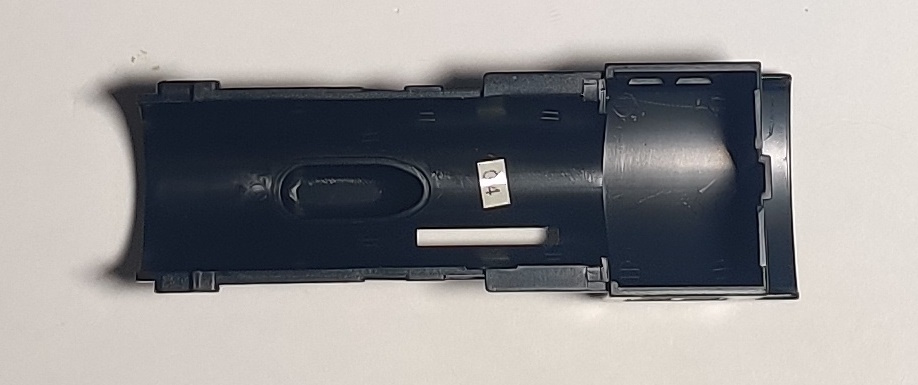
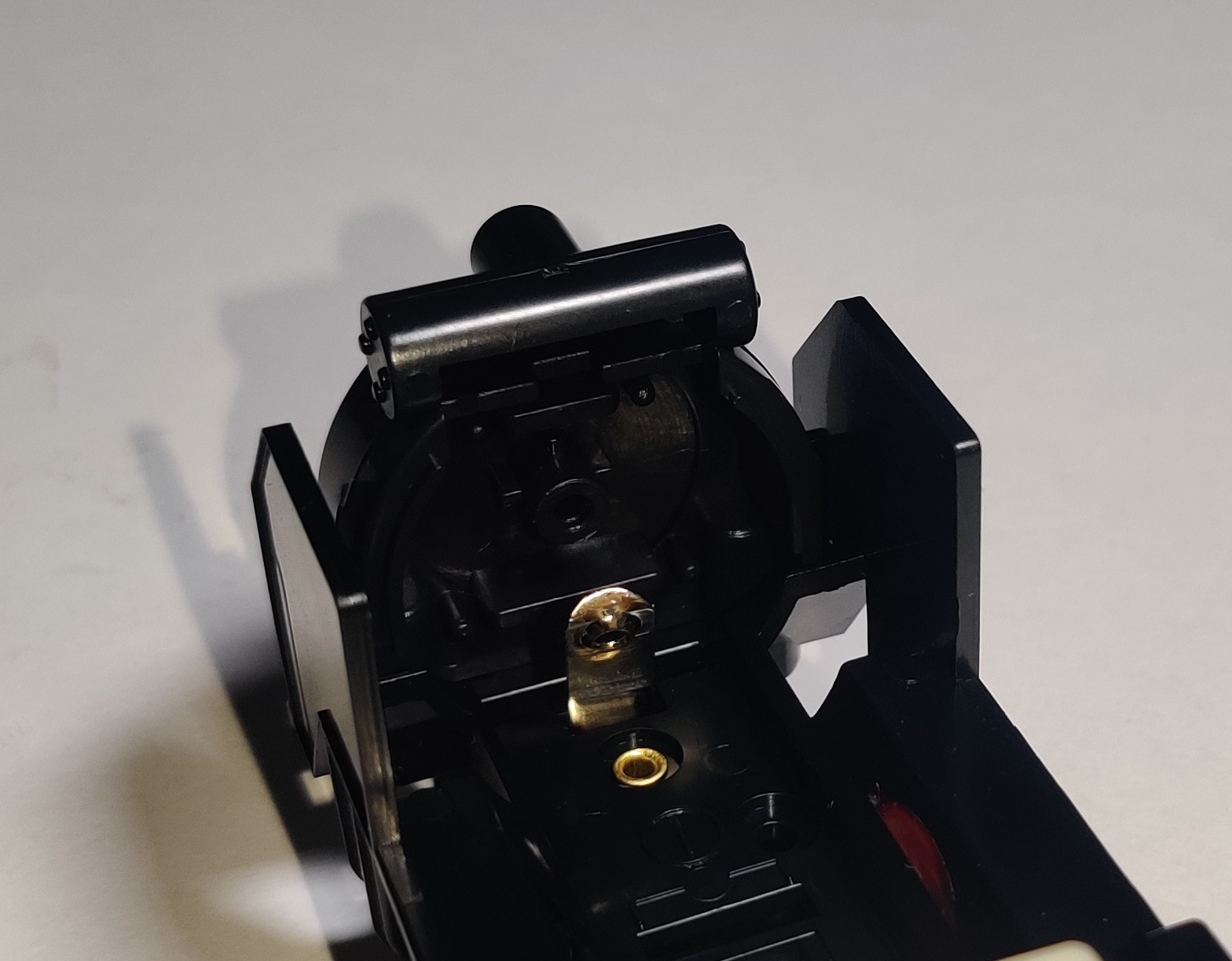
The D51 included is the same molding as the new power D51 with Light only without the light installed. My example was produced in July 1994.
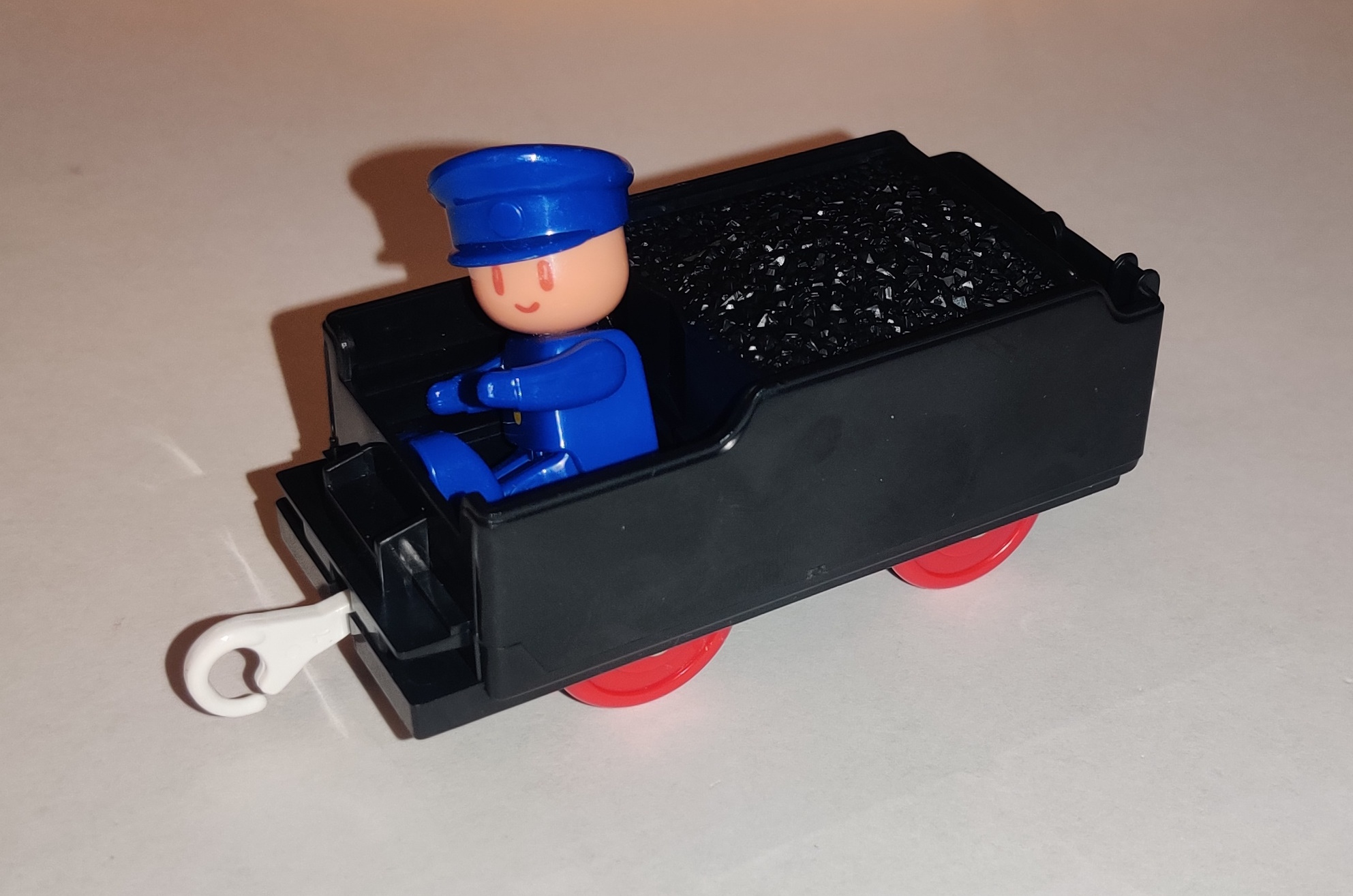
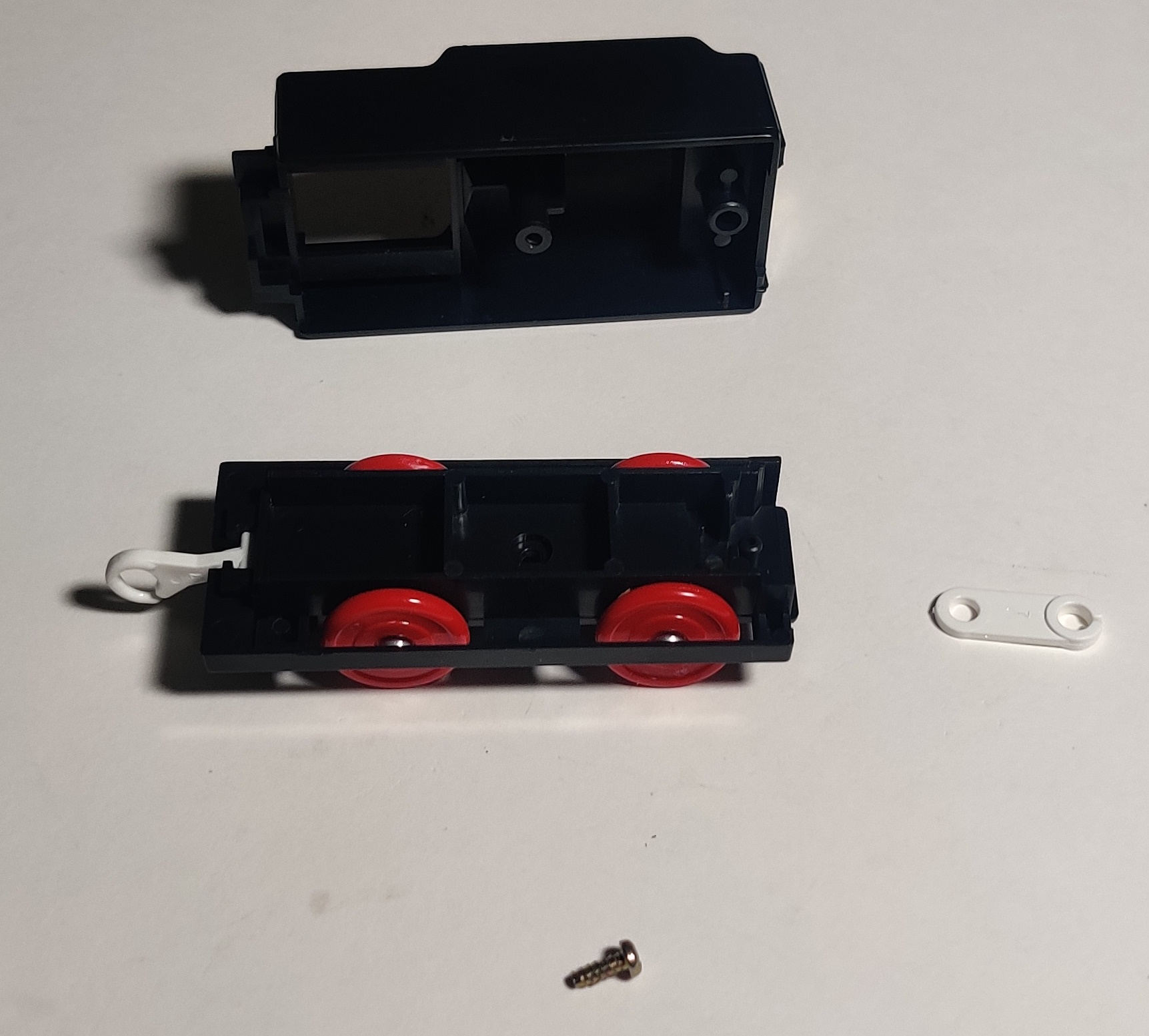
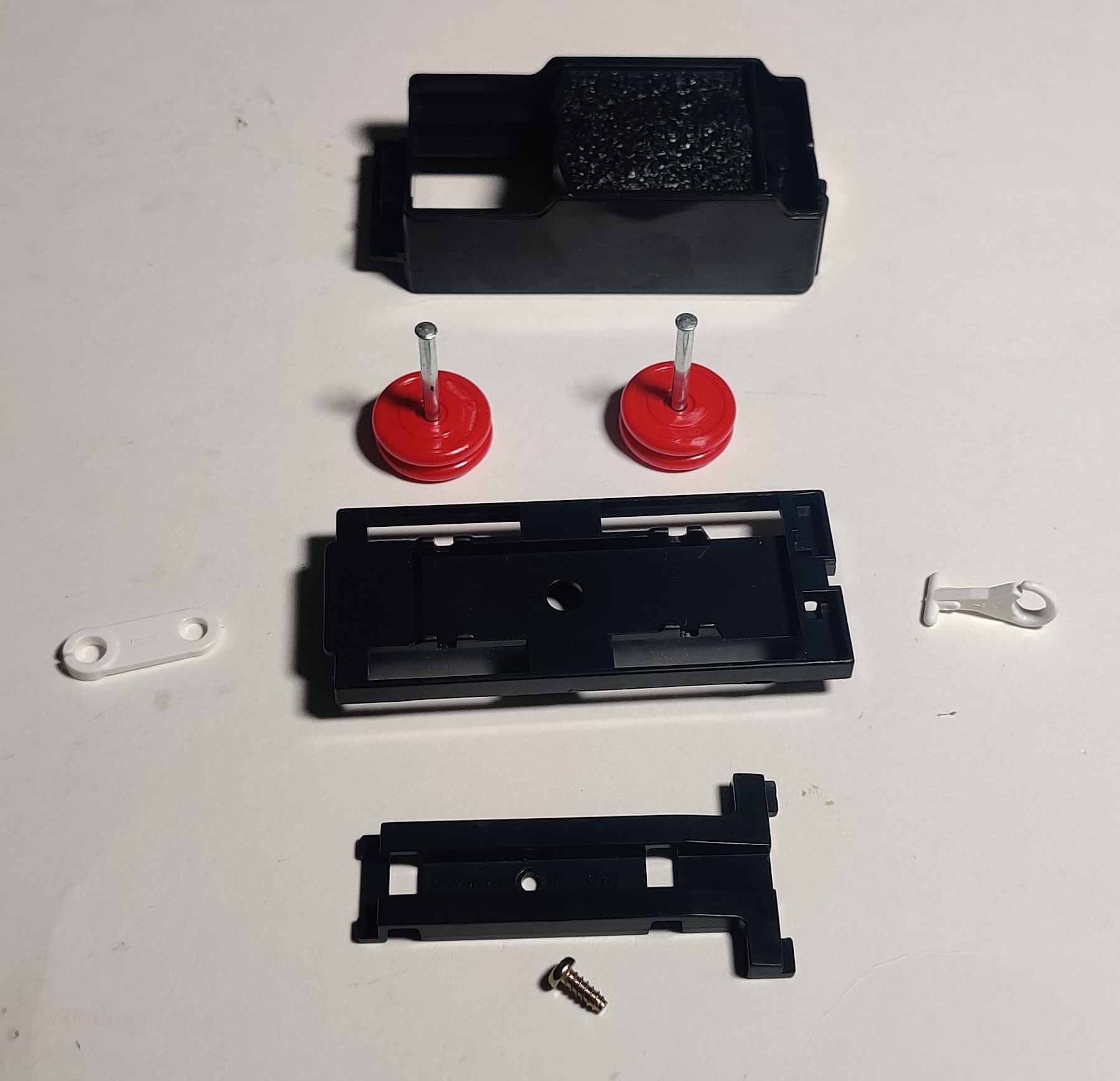
The tender is a one-off molding with an extended front lip to retain the hook coupling in front of the driver's seat. A sliding carrier plate keeps the wheels affixed to the chassis when screwed in. The additional size of the tender over the standard old style D51 tender makes it look more impressive and it has a nice amount of detail.
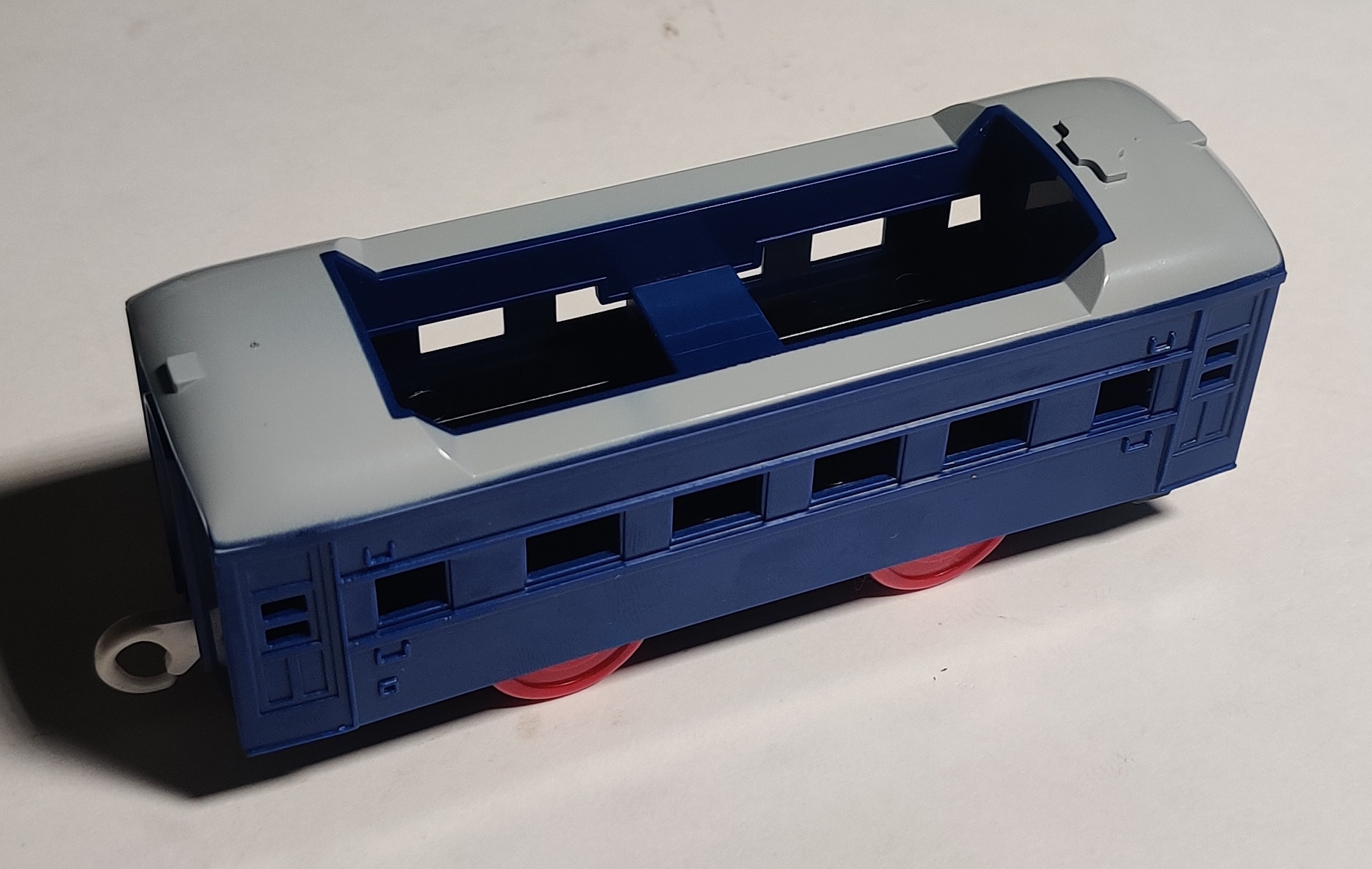
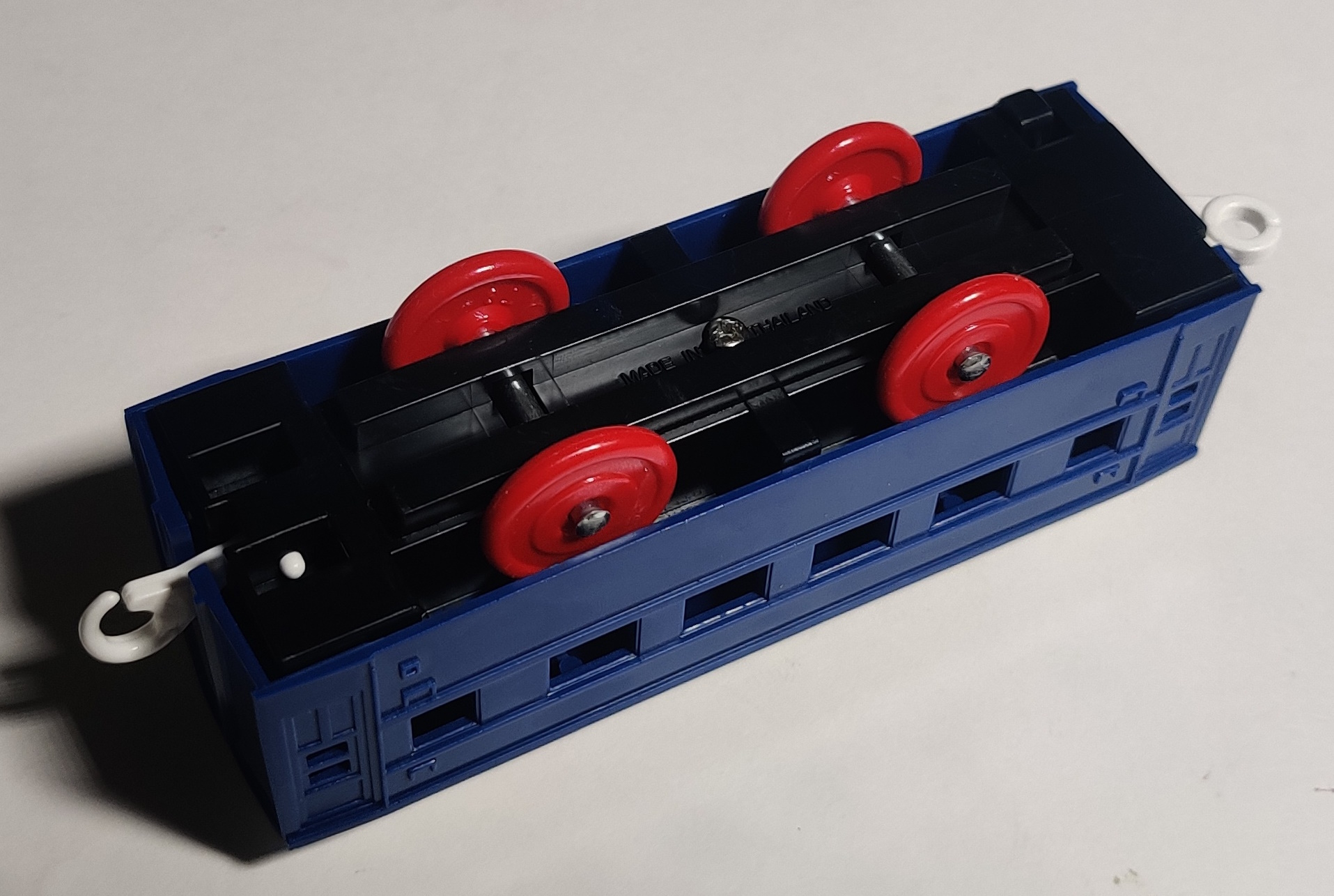
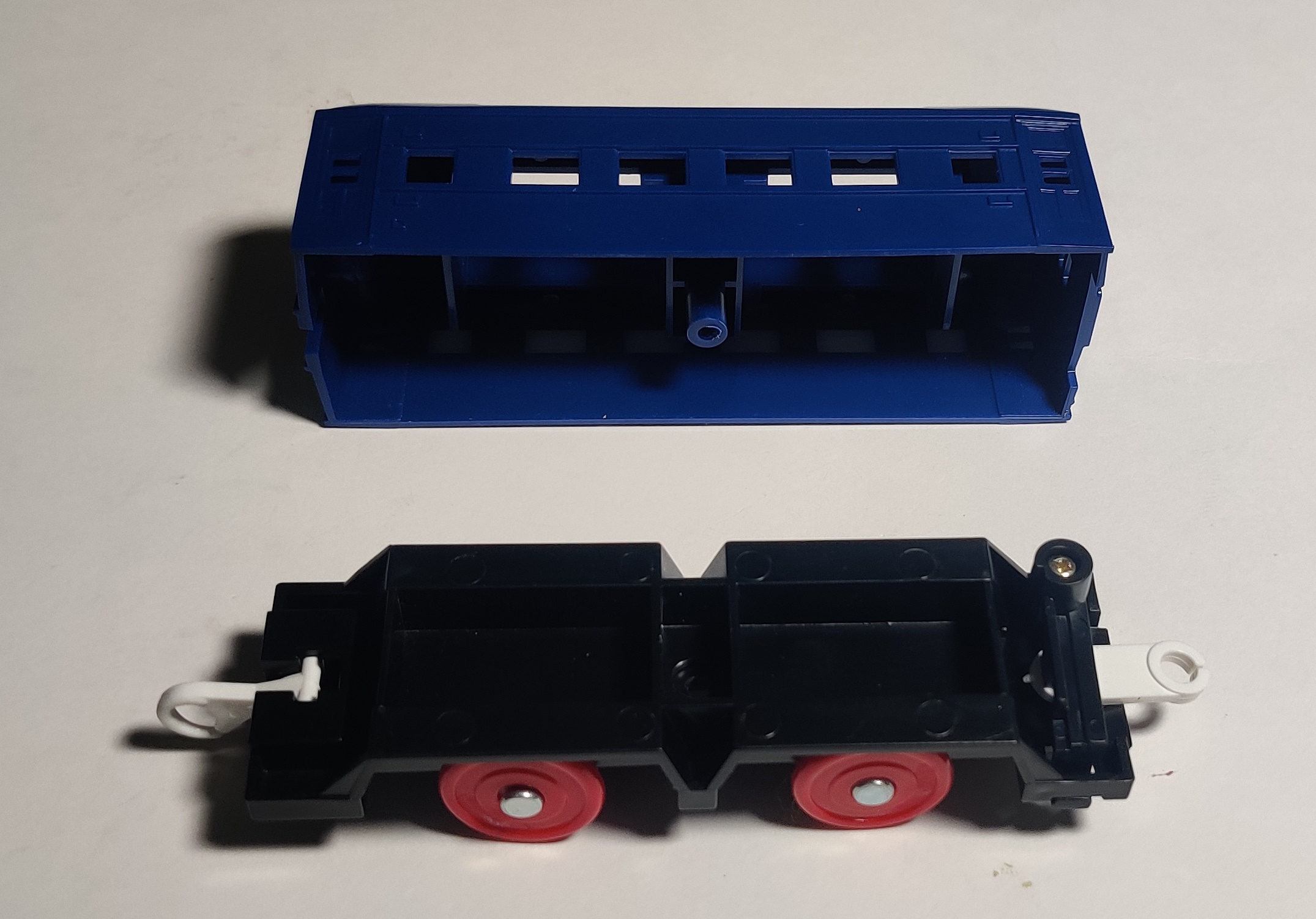
The tail car uses the same chassis molding as the rest of the series but actually has the rear coupling installed. The fact that it was present in the molding from the beginning makes me suspect that the Doll Play D51 might have been planned since the beginning of the Doll Play series in early 1993 and may have been held back to be released as part of a second wave with the larger Ticket Play Station set later in 1993. Neither the Ticket Play Station set nor the Doll Play D51 appear in the 1993 catalog (which, funnily enough, was included in the Ticket Play Station set).
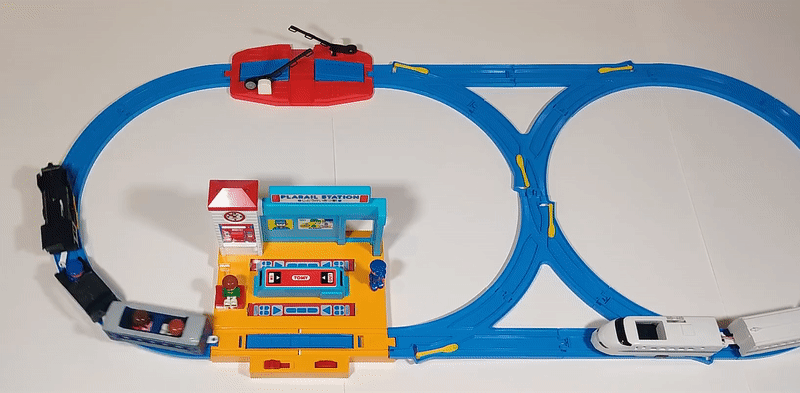
Here is the Doll Play D51 running on the Ticket Play Station Set. Click for video with sound.
J-19 Doll Play Automatic Ticket Gate Station
| <-- J-18 Railroad Crossing with Sound |
J-20 Rail Road Crossing --> J-20 Fun Train Factory --> J-20 Girder Bridge --> |
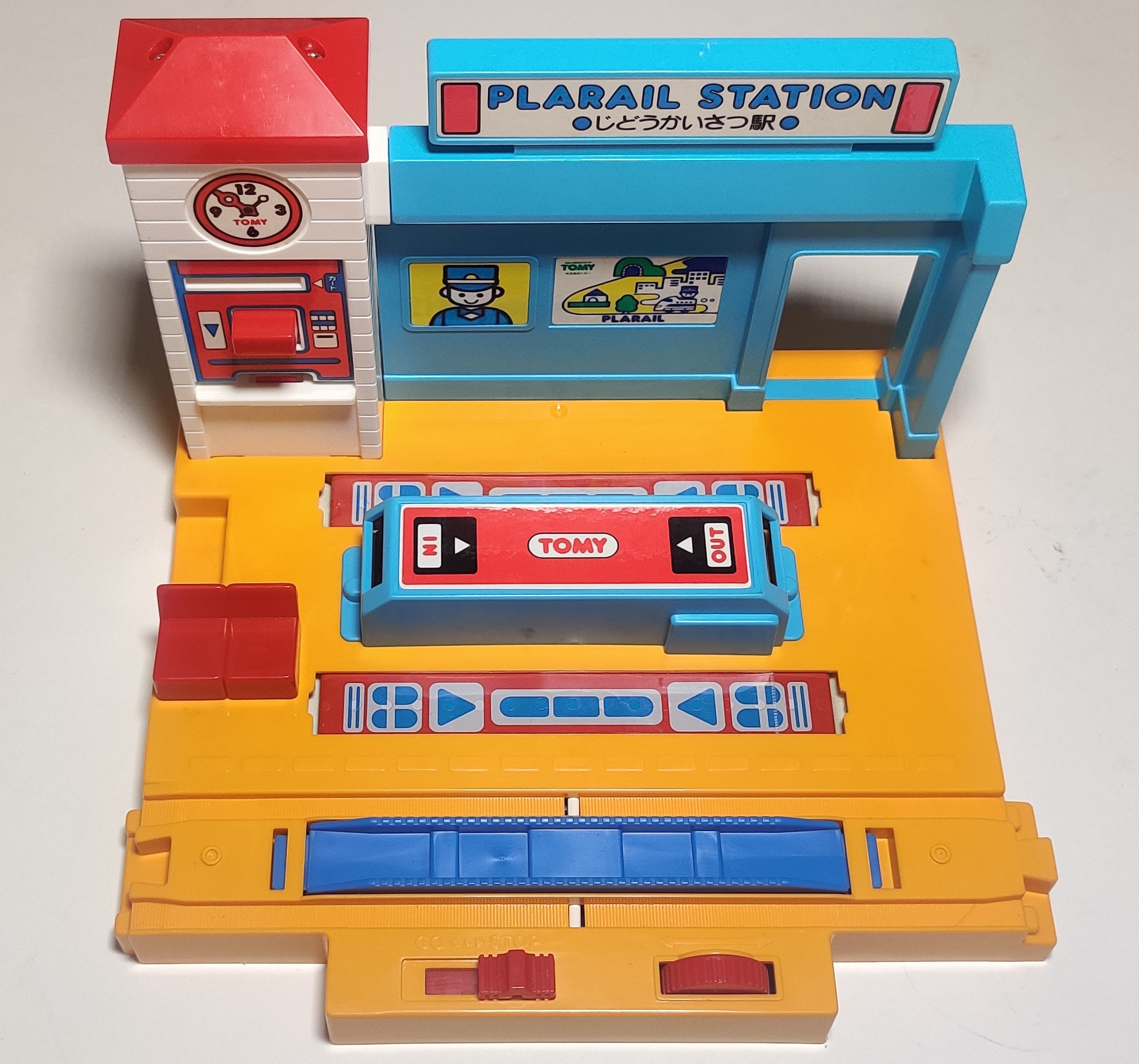
First released in later 1993 in the Ticket Play Station Set, a Doll Play-series interactive ticket machine station was released individuall as J-19 Automatic Ticket Gate Station (自動改札駅) with the train cards and tickets as well as the boy doll between 1994 and 1998 or so.
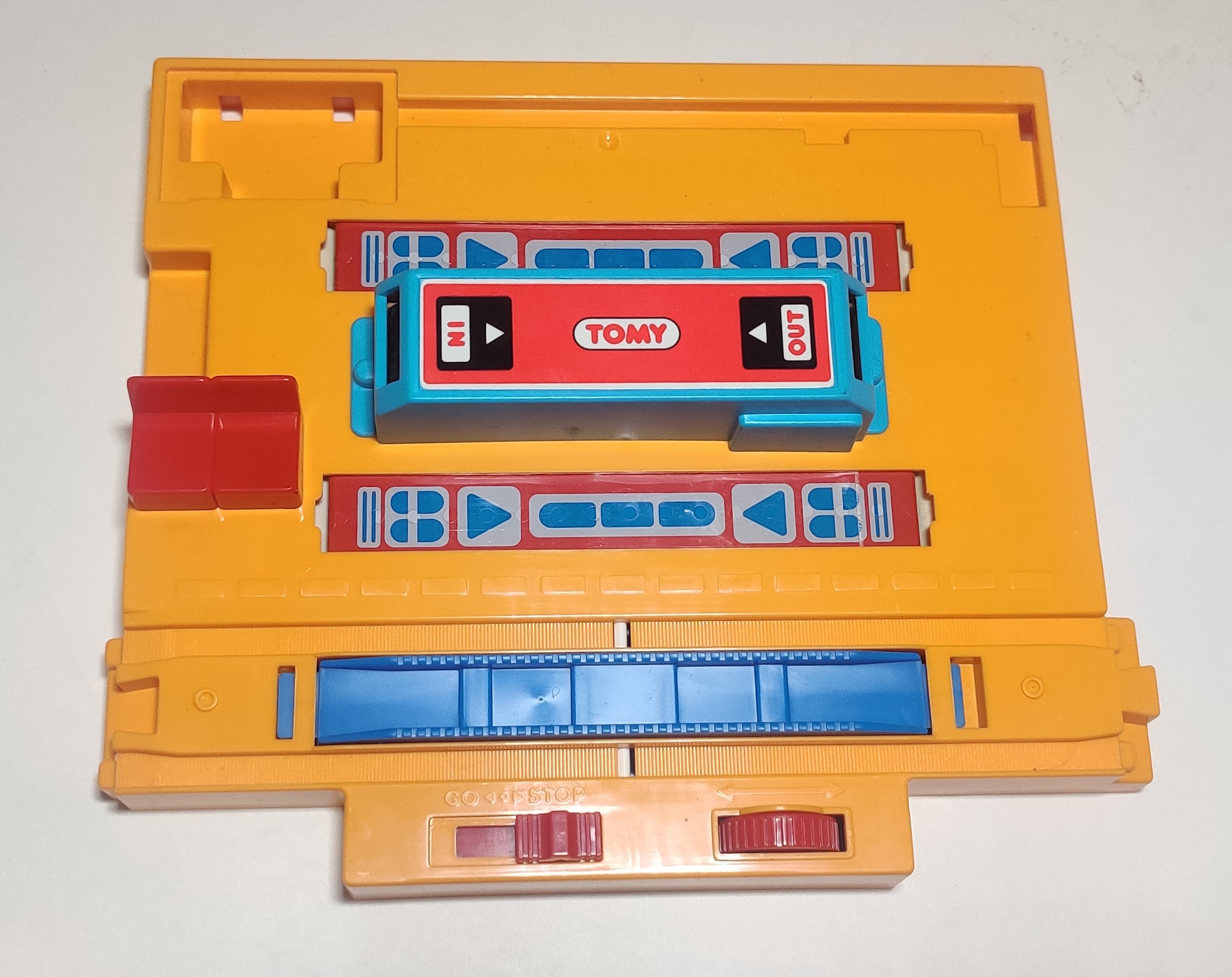
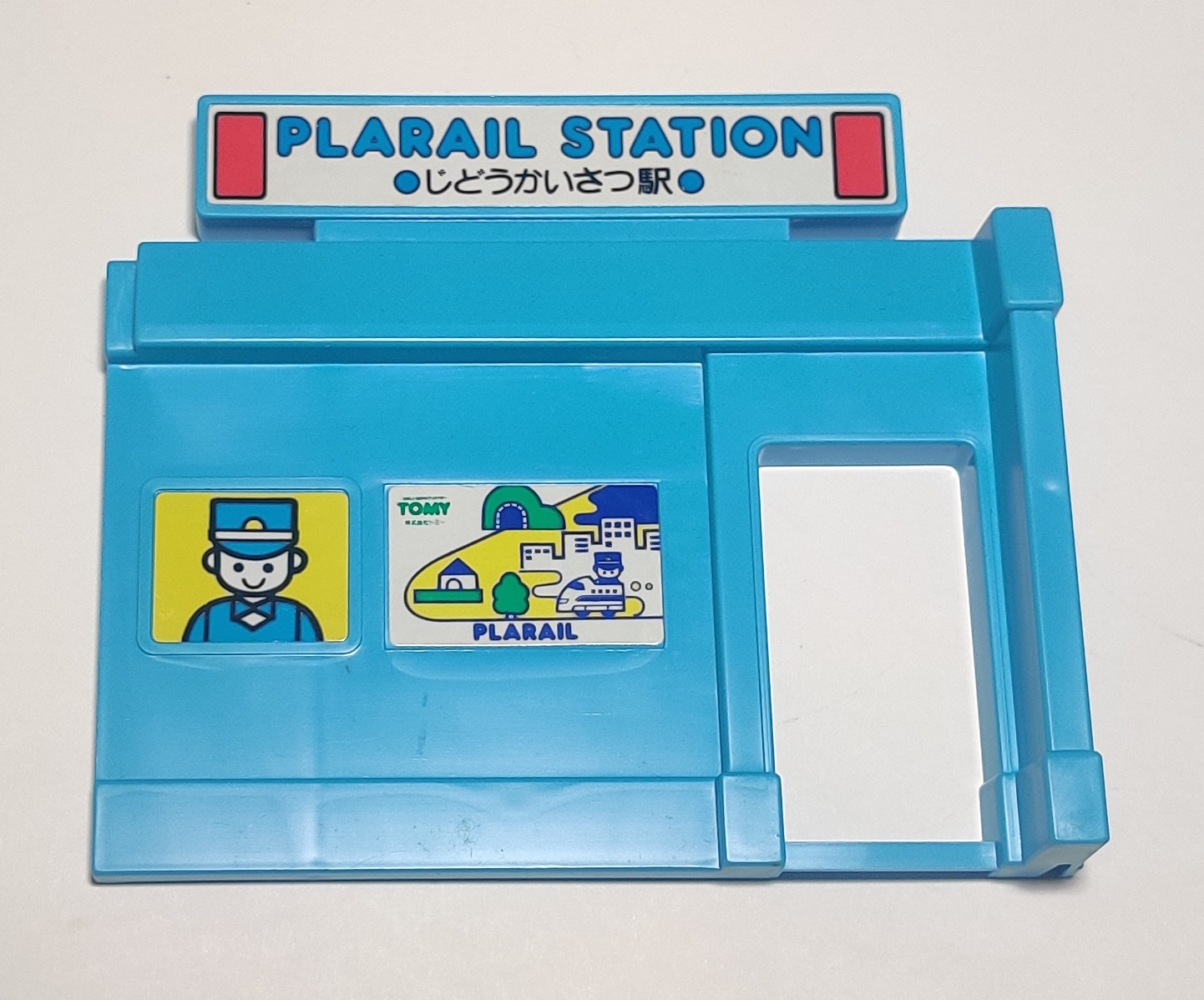
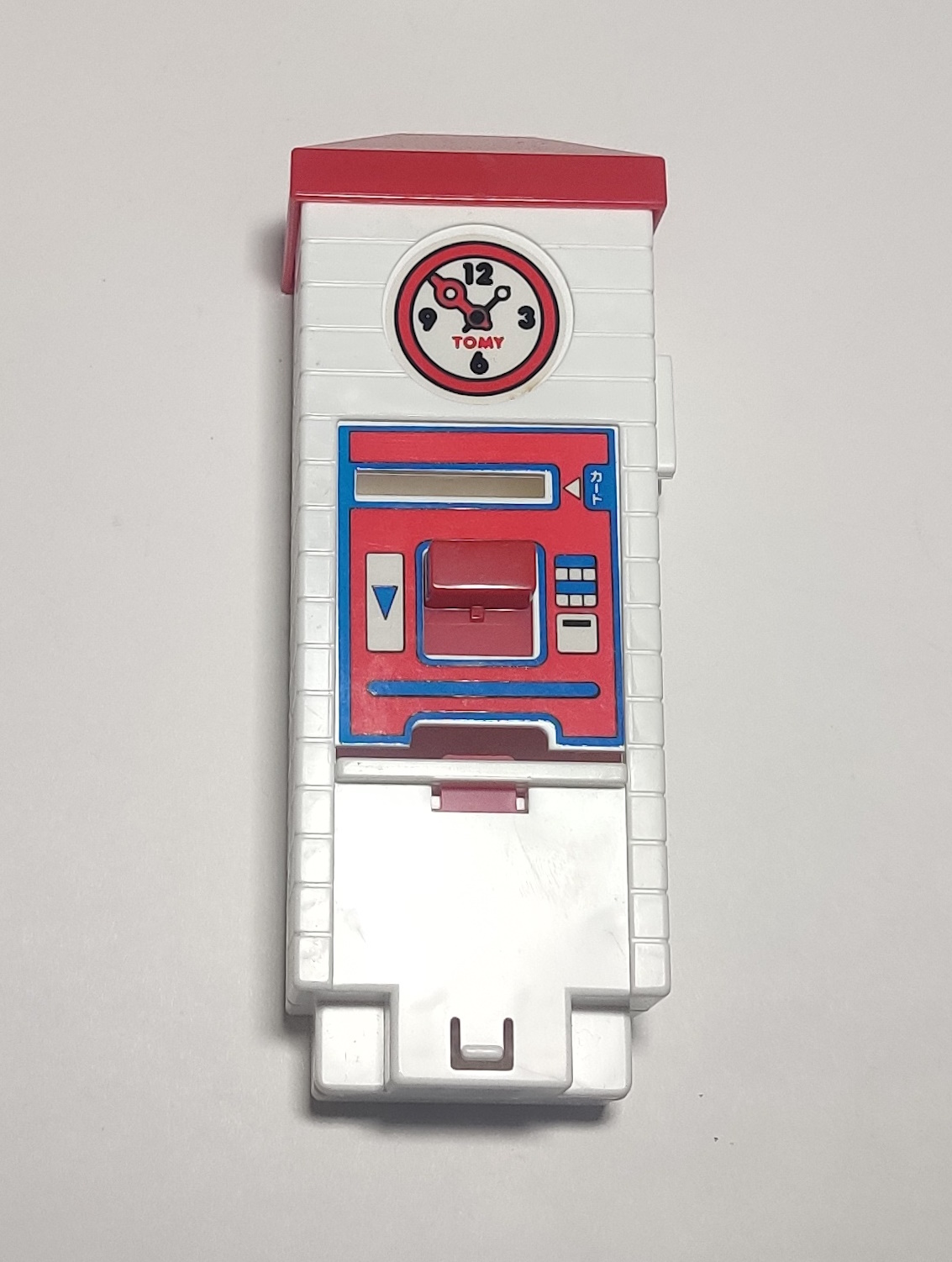
The ticket play "Plarail Station" comes in three pieces. The large orange base includes a stop rail to stop the train, molded features to install the other station components, a bench, and an automated ticket gate. Magnets under the walkways and a thin plastic sheet that can be rotated using the dial near the stop rail allow the figures to "pass through" the gate, and the tickets dispensed by the ticket machine can be slid along a conveyer in the raised blue ticket scanner between the two walkways. The main wall of the station is a large piece of molded blue plastic with a door frame and several stickers, and the other portion of the rear of the station is formed by the ticket machine.
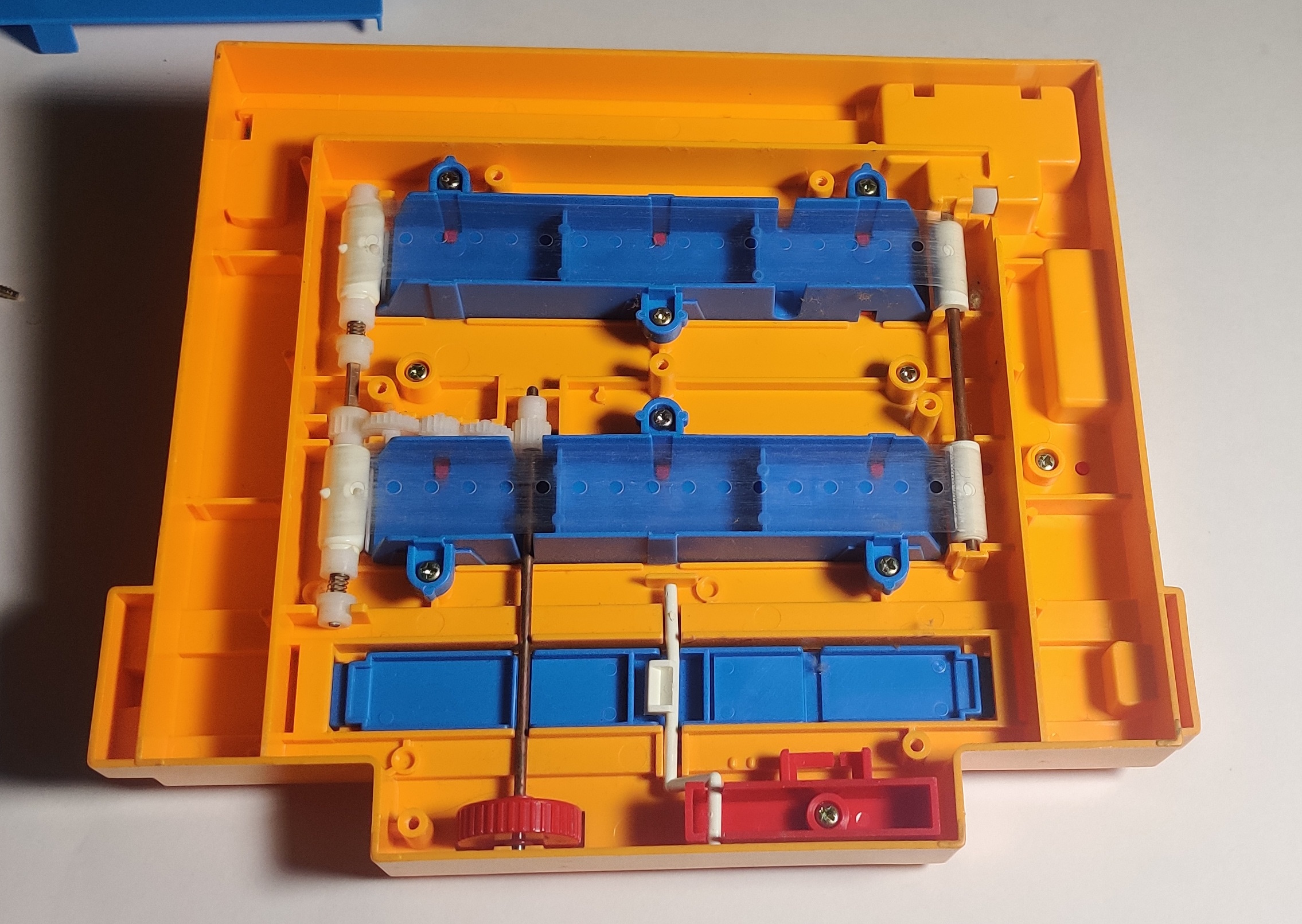
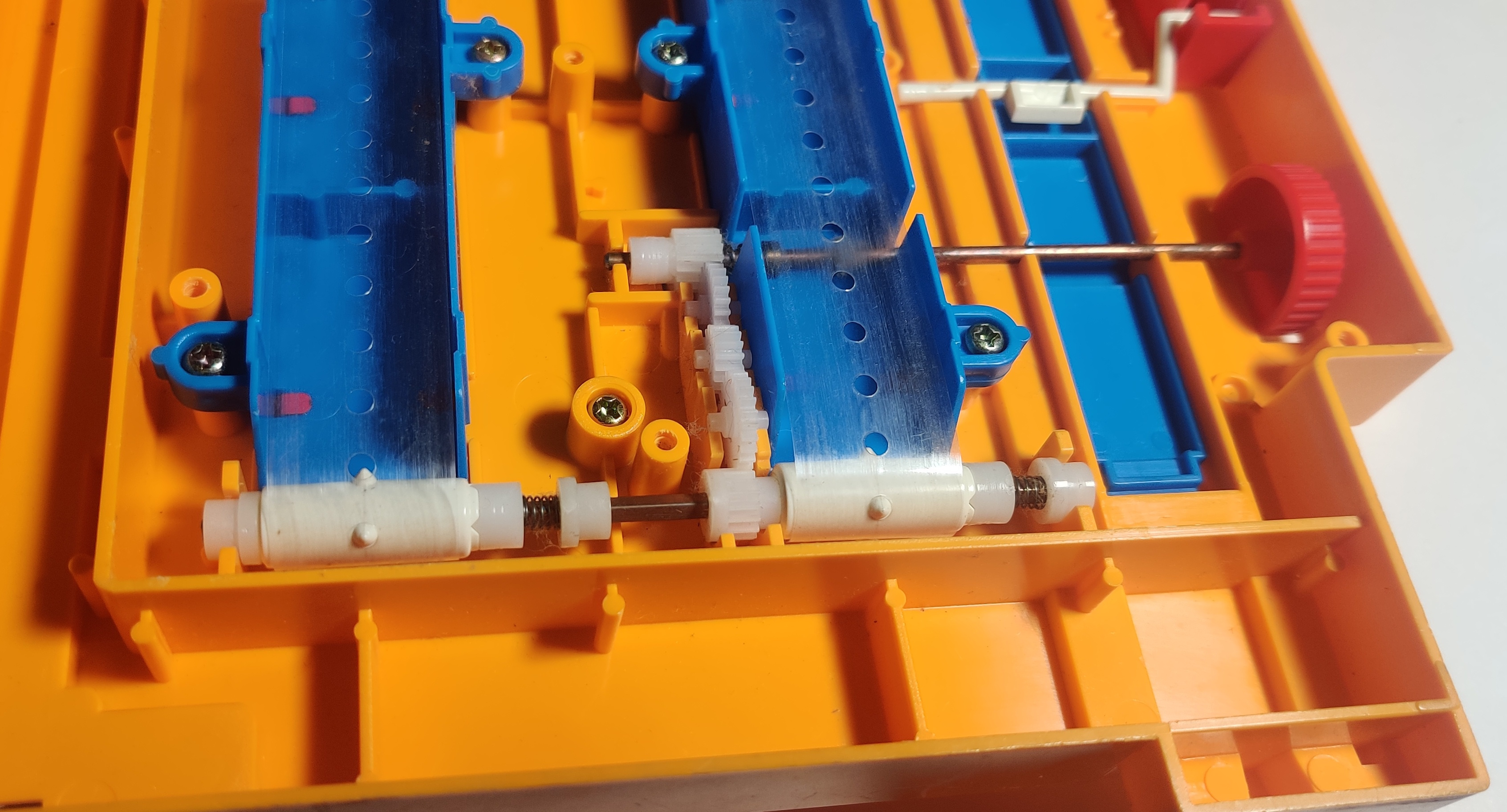
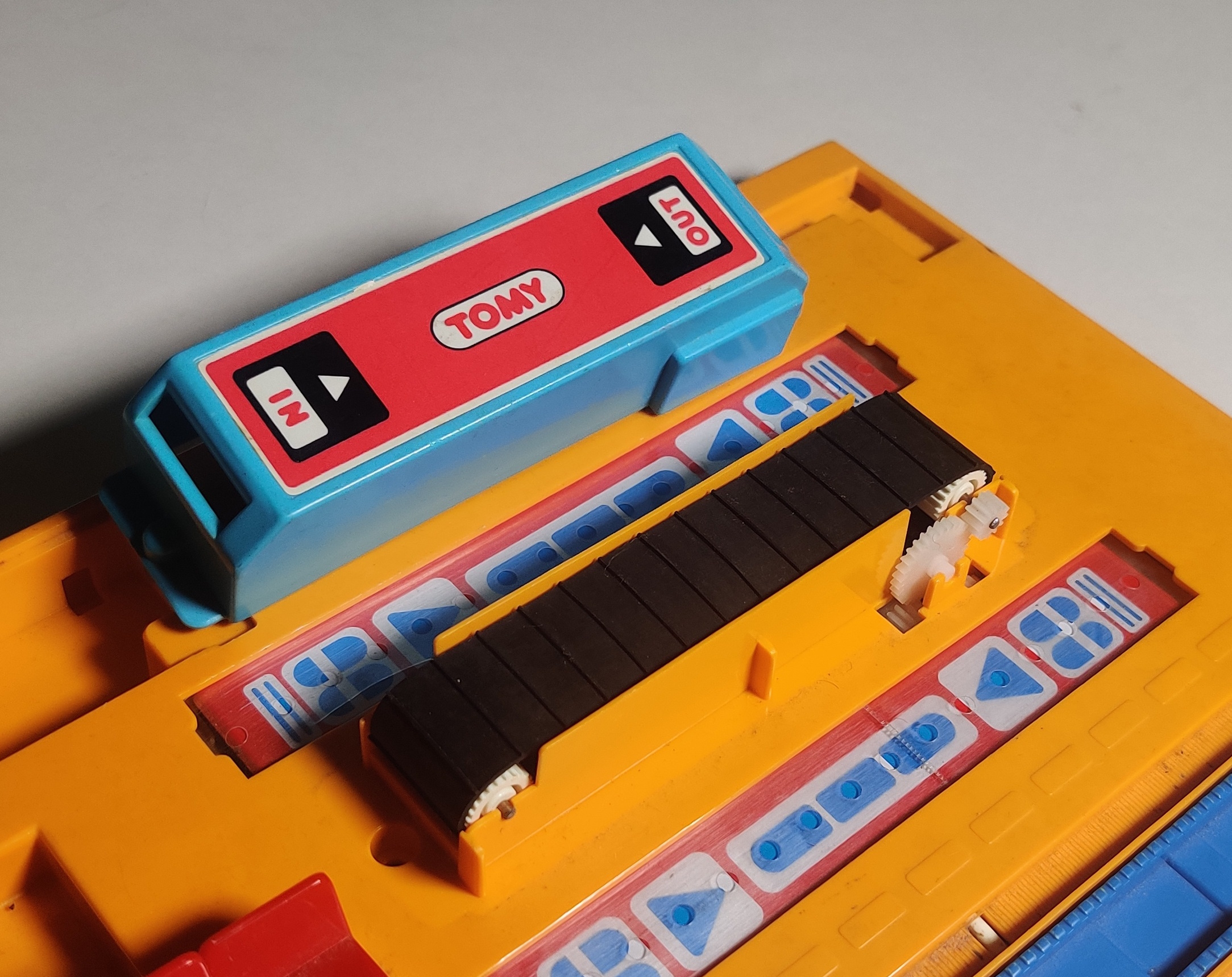
Inside the base of the station is the stop rail mechanism and a small gear train that runs two pin-feed rollers to drive the plastic strip that the play dolls stand on. Another gear couples the knob up to the conveyor belt under the blue ticket scanner to move the tickets through the machine.
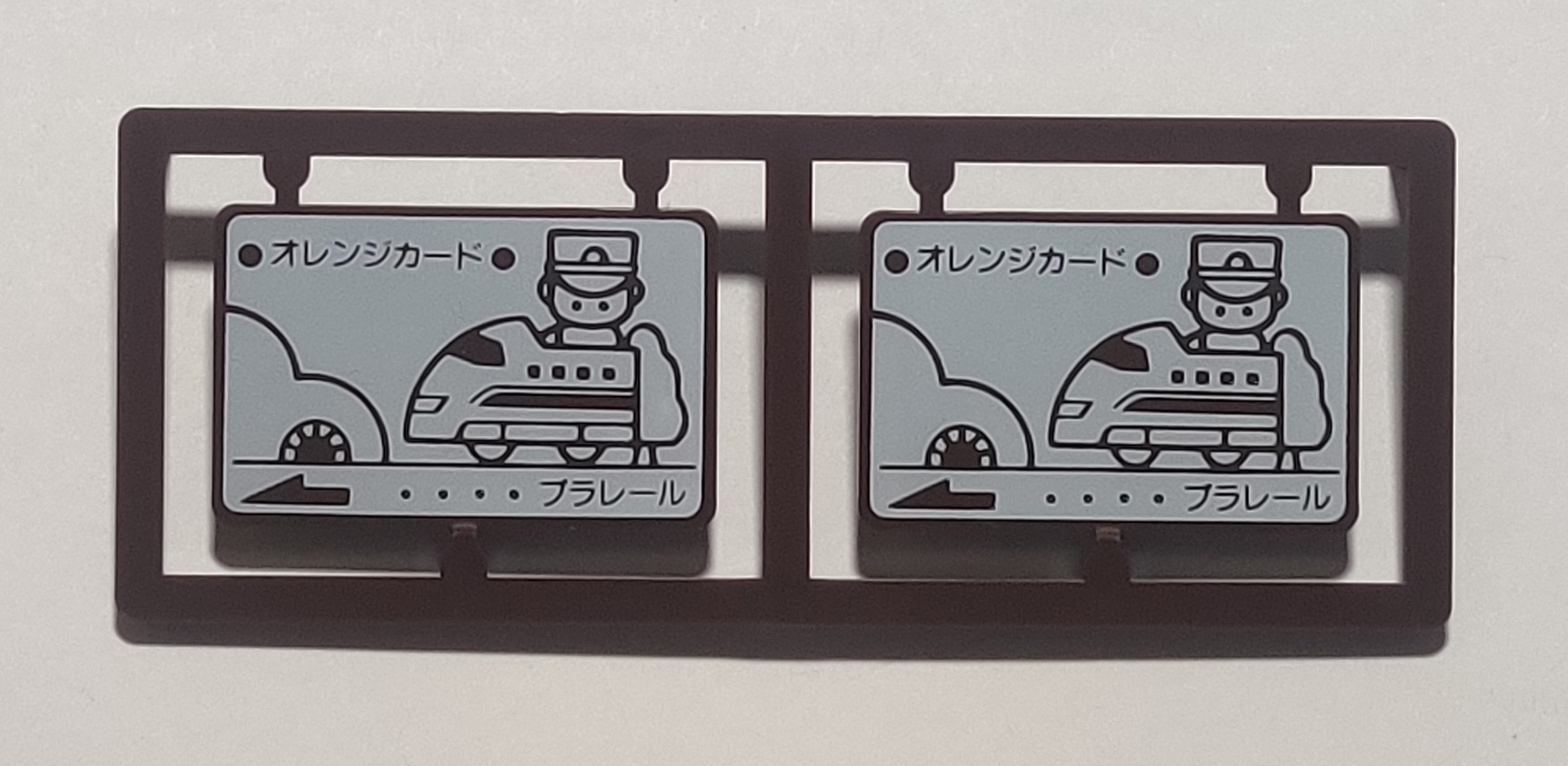
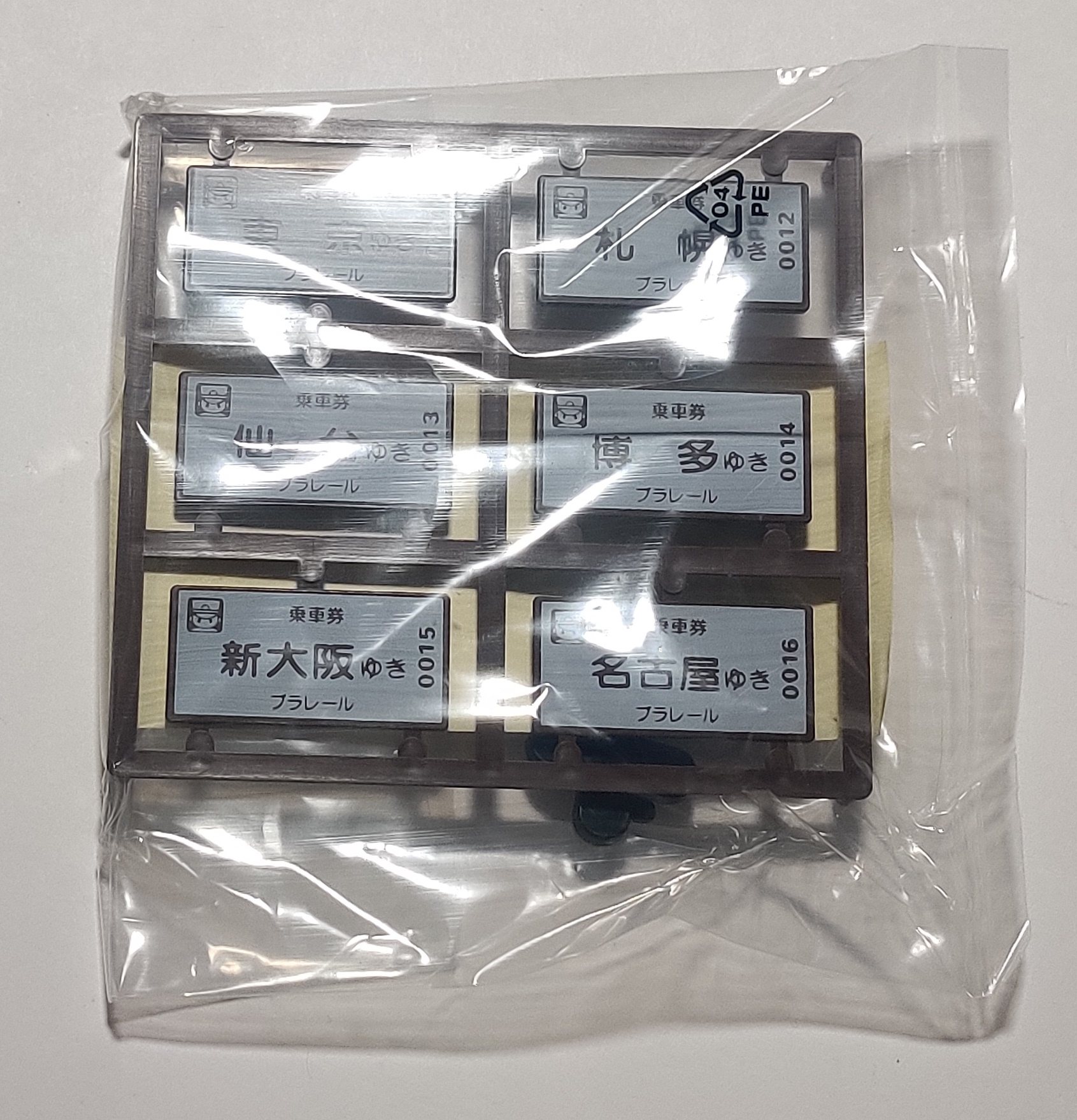
The set includes two larger punch-out plastic "orange cards" (オレンジカード) prepaid travel cards and six smaller train tickets. Inserting the prepaid card into the machine and pulling the lever will dispense a train ticket that can then be "scanned" through the gate. My boxed copy of this set was seemingly unused and thus the tickets are all still on their sprew (or on their sprew in a sealed bag). At some point I will get out my calipers and measure these to 3D print replicas but I have not set my 3D printer back up since moving (July 2023).
(October 2023)
Orange
cards measure approximately 41.7mm by 26.8mm by 2mm thick. The tickets
measure approximately 40mm by 20mm and are also around 2mm thick. They
should be reproducible out of any material which is reasonably sturdy
and formable, but I opted to 3D print some. The files I used are
available here.
Tickets are loaded into the back of the ticket machine in a stack.
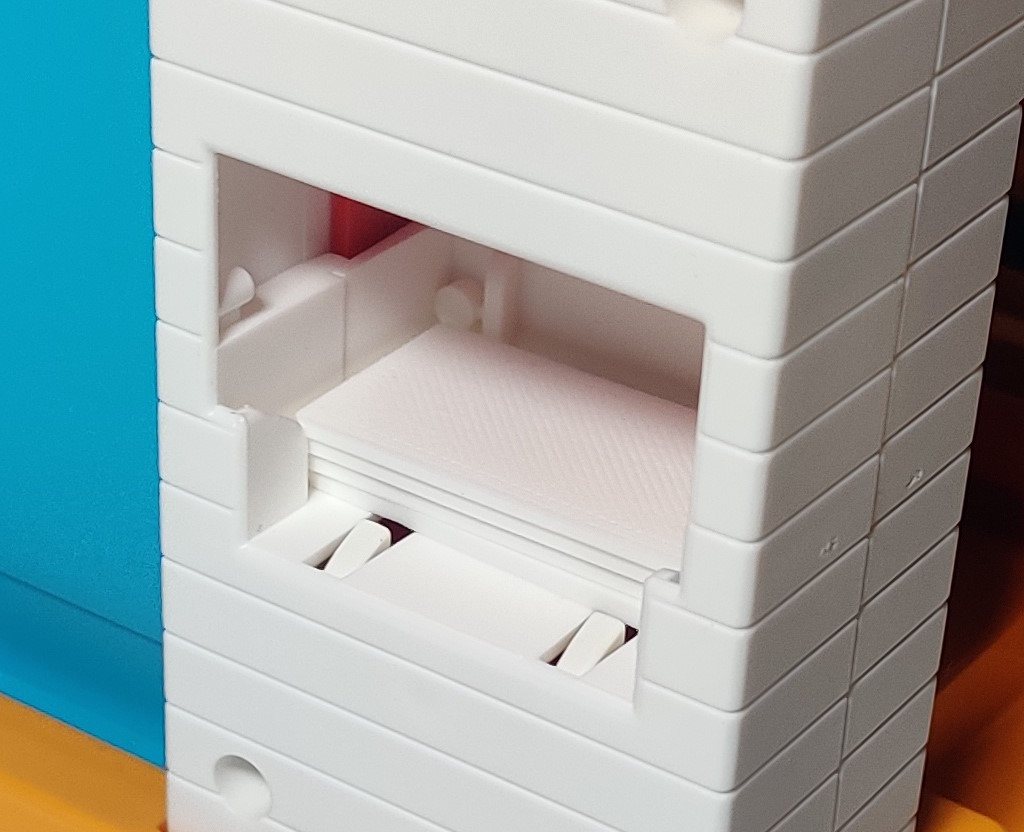
The train cards fit into the top slot on the ticket machine. Pressing the red lever below it will dispense the bottom ticket in the stack. The orange card does not have to actually be inserted in order to dispense a ticket.
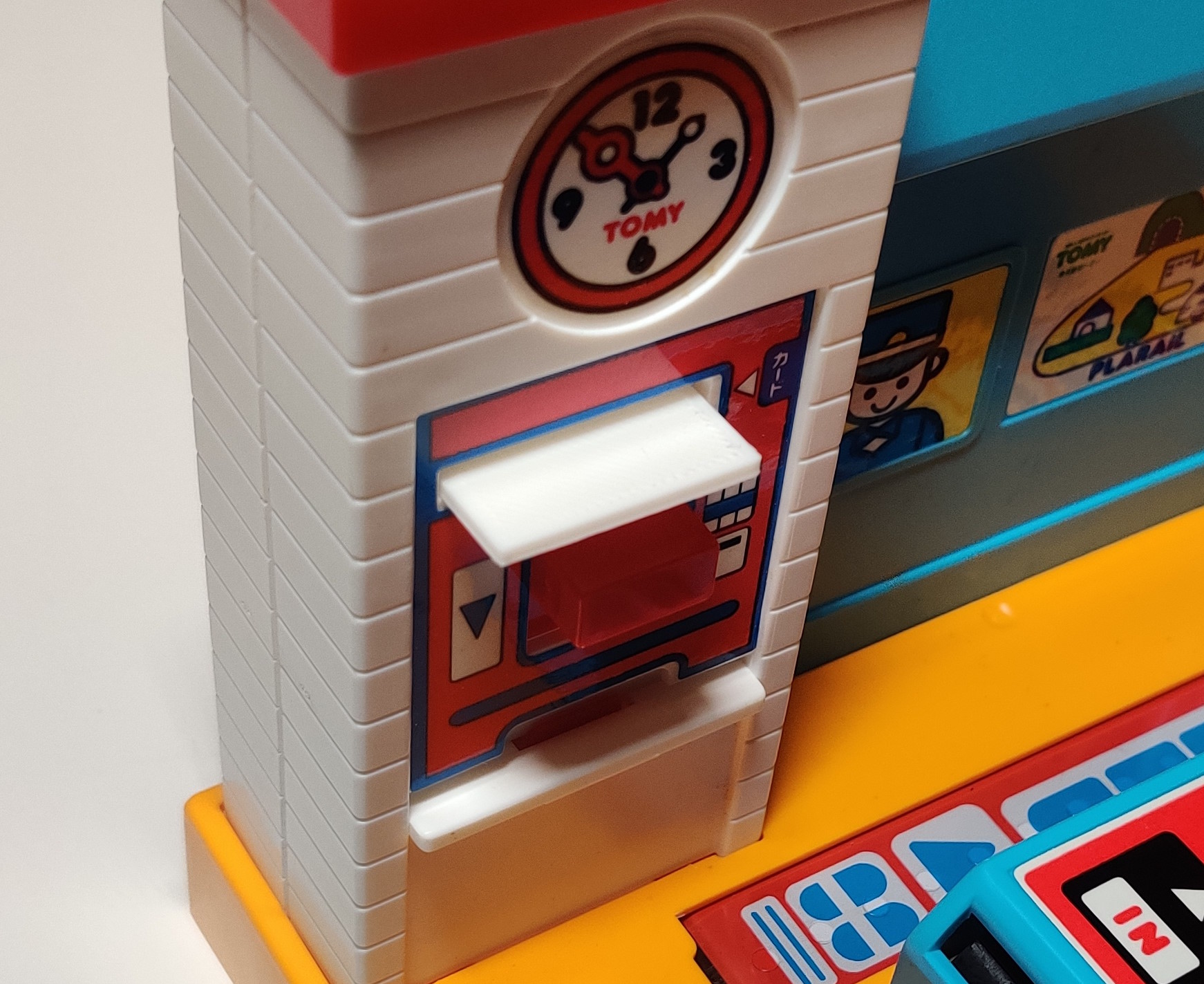
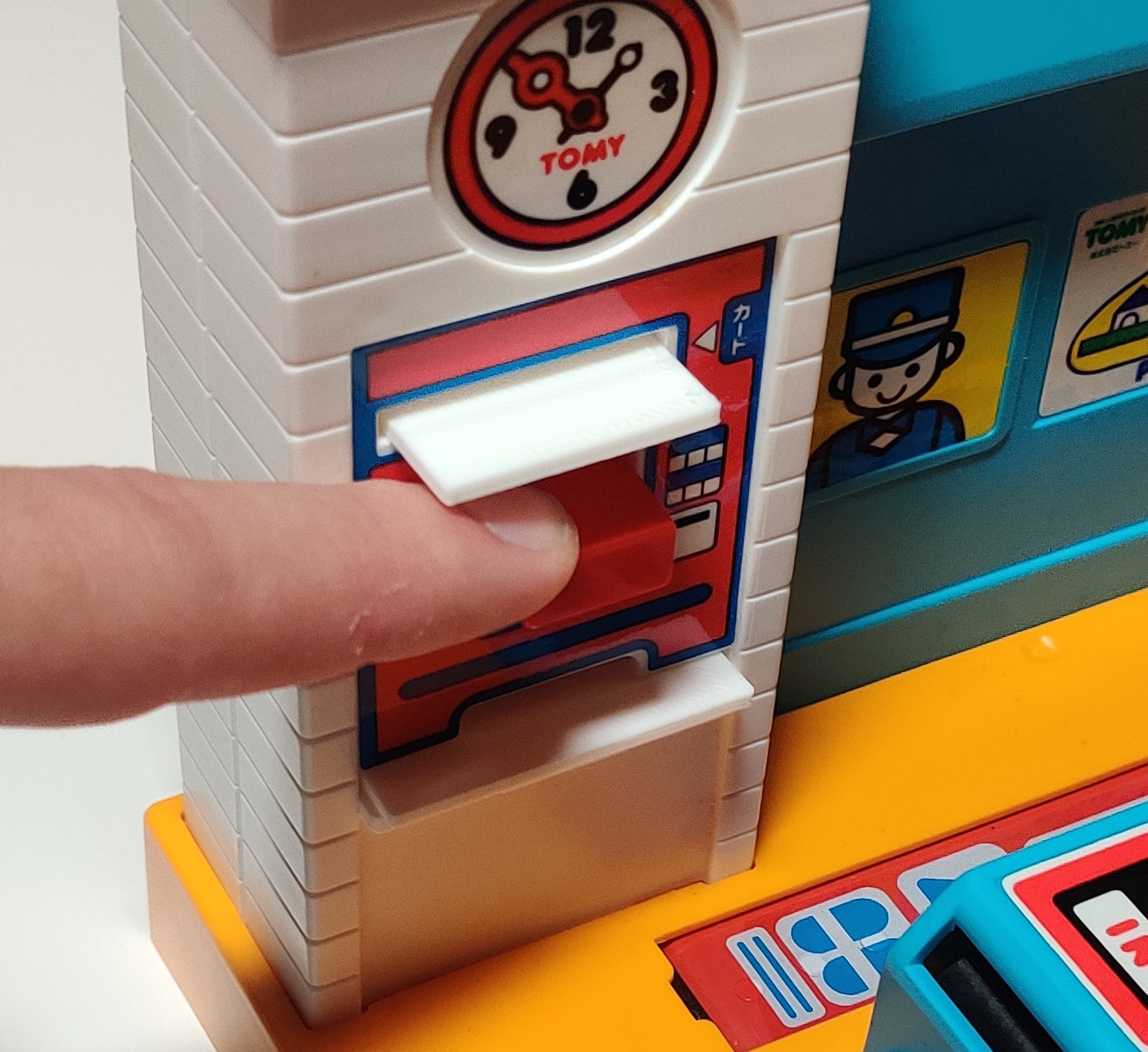

The ticket can then be inserted into the ticket gate and wound through the machine.
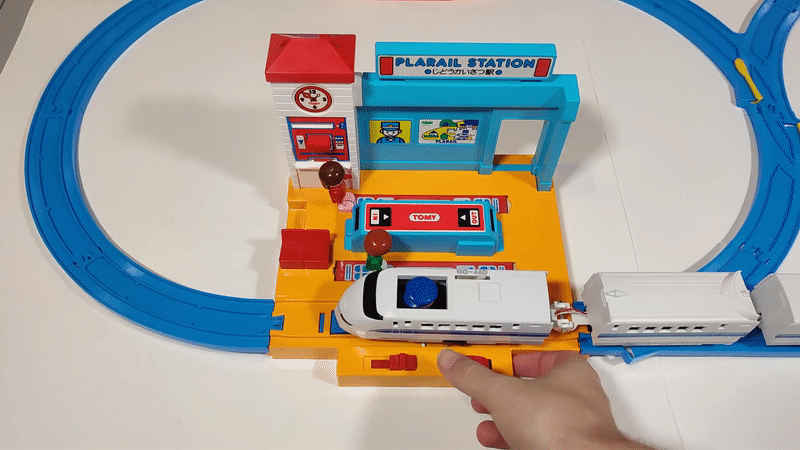
After getting a ticket at the ticket machine, the ticket can be placed into the "IN" on the machine and the play dolls at the entrance of the gate and then by turning the knob by the stop rail the figures and ticket will be transported to the boarding side of the gate.

In addition to the trains and sets mentioned above, the six-lane Future Express Nozomi station in the shape of a 300 series Nozomi was released in 1995 and included two train driver and one male passenger Doll Play dolls. Photo from the 1995-1996 Plarail catalogue.